Hello Hivers time for some Choo Choo time. I came to work yesterday and there was nothing pending to do so I split after lunch. I decided to check out a museum that use to be one of the cities train stations. I will only do the transportation related items in this article.
Upfront this museum is packed with so many things. I got there shortly after noon and was kicked out the door when it closed at 4:00 p.m. I think I got to see roughly 80 % of everything. I'm not going to lie I was tired and warn out a bit. I thought before going I would be able to do one article on this but it will probably be at least 3. One of the better museums I have ever walked. A must see if you ever visit Omaha.
This article is part of a series of the Greater Omaha Area. If you want to check out any other articles in this series here they are below:
River's Edge Park Part I
Council Bluffs Historic Hay Market Part II
Historic Oakland Avenue Part III
Lauritzen Gardens Omaha, NE Part IV
Lauritzen Gardens Revisted & Kenefick Park Omaha, NE Part V
Squirrel Cage Jail Council Bluffs, IA Part VI

Omaha's Union Station opened in 1931 and ceased operations in 1971. In it's prime 10,000 passengers arrived/departed from there on 60 plus steam powered locomotives daily. Soon after it's use as rail passage facility the building was donated to the city by Union Pacific Railroad where it quickly turned into the Durham Museum.

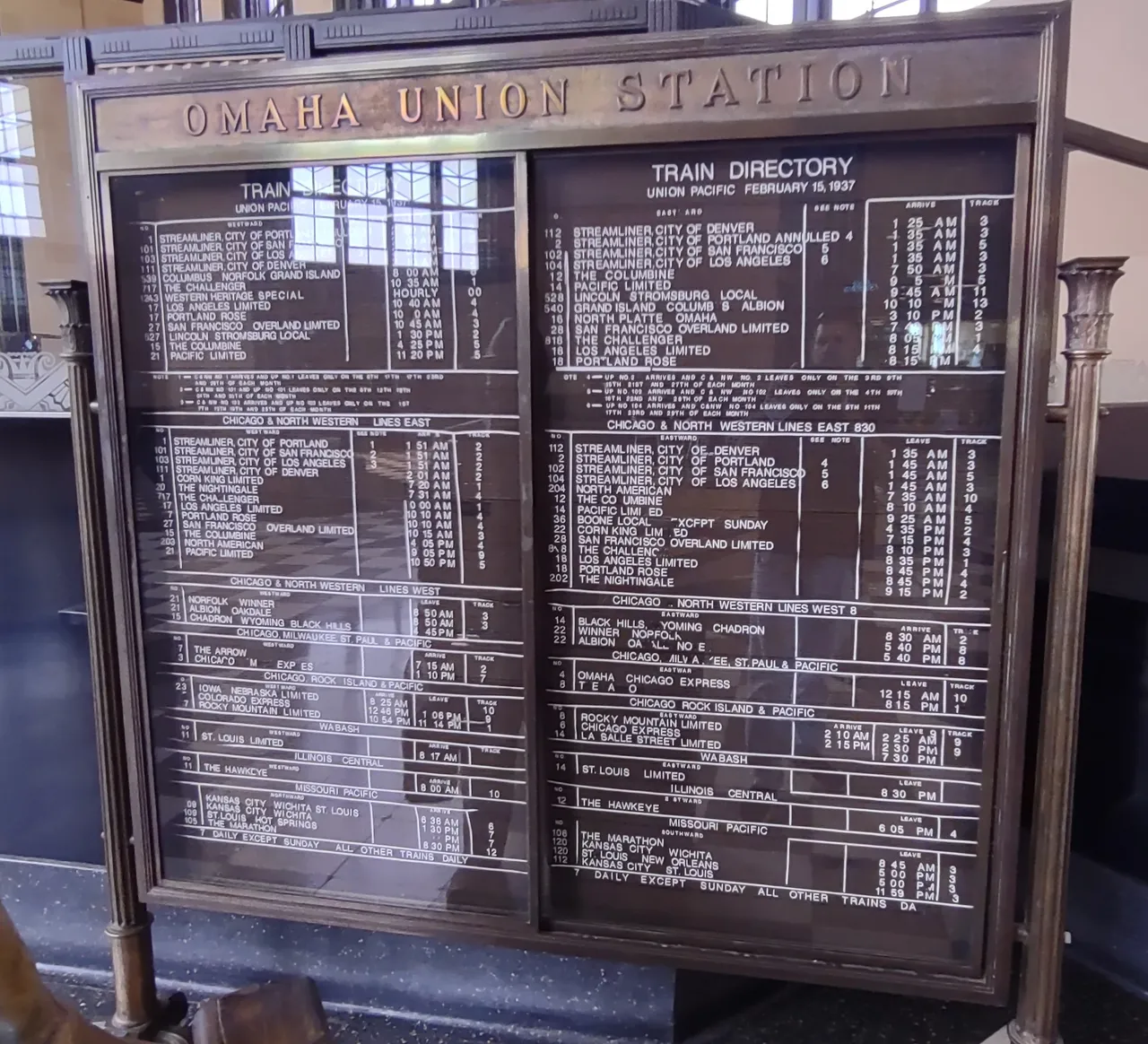
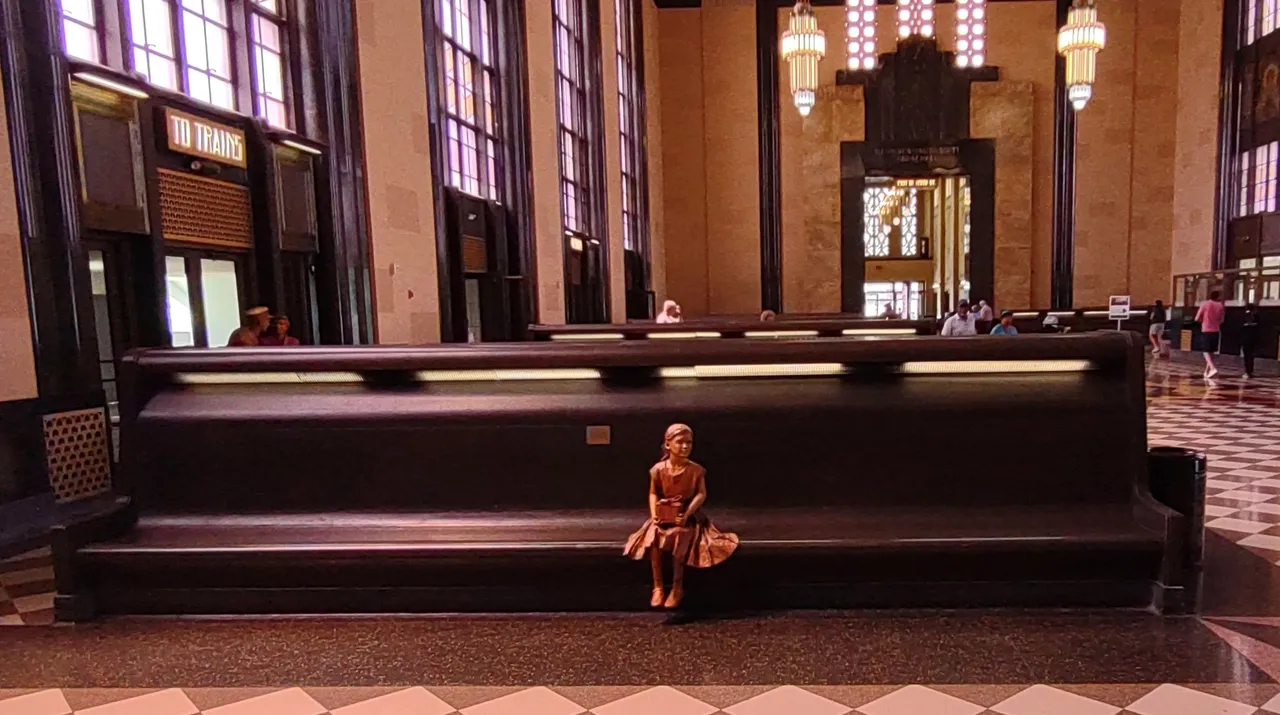

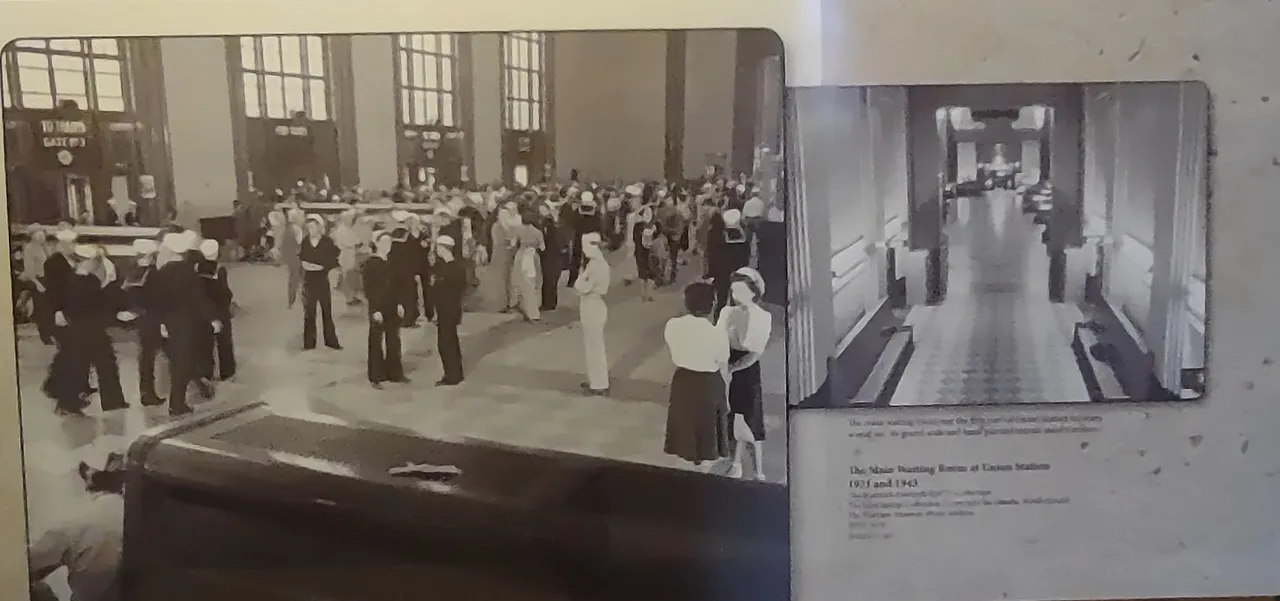
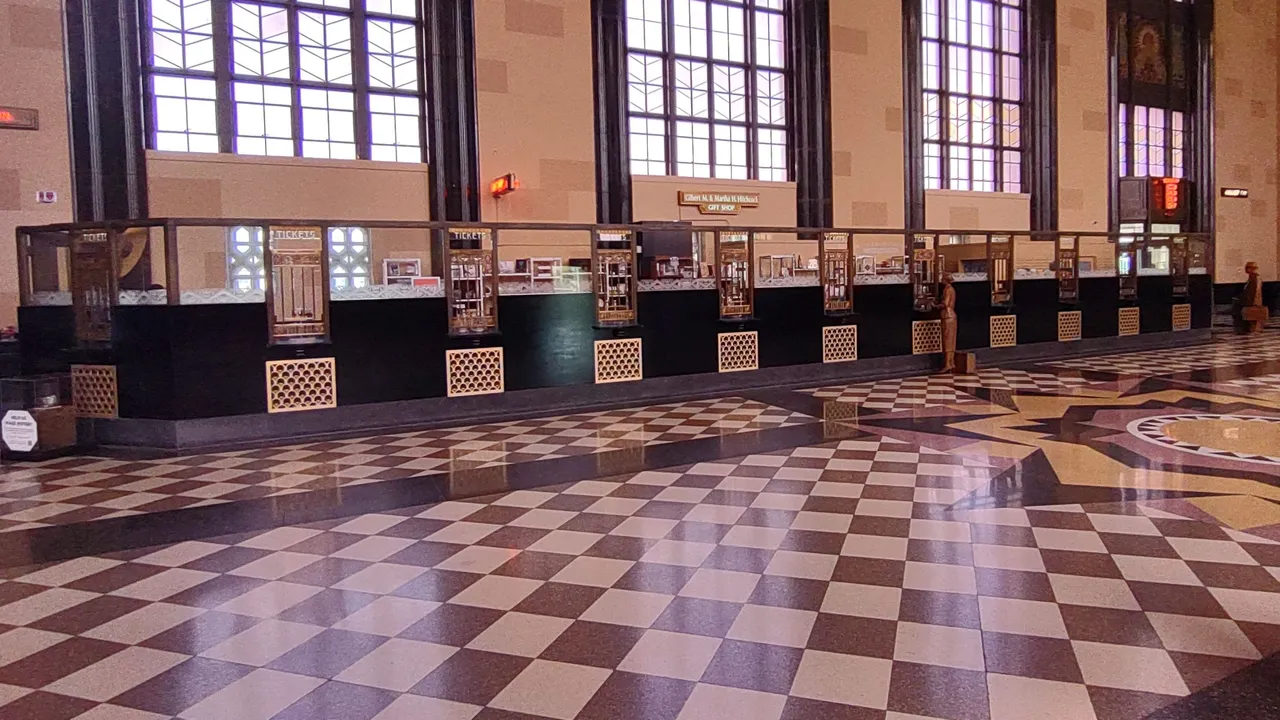
Just like other time period train stations this one has beautiful vaulted ceilings. Much of what you see is still here in its prime days. The floor has not changed and contains some neat art work. Beautiful dropped hanging chandeliers along with lots of windows giving the spacious area plenty of natural light. During Christmas time this area holds the tallest indoor Christmas tree in the city each year.
The original train directory board remains. I spent a few minutes looking at arrival & departures times, locations, and the rail companies that provided services. The schedule showed a schedule from about 85 years ago. I so wish this was a reality and I could hop on one of these.
Throughout the reception area are bronze figures siting on benches or are standing near different sections of the terminal. Some have activated sensors that prompt voices telling a story of their travel journeys. This passenger terminal was an important one in the Midwest and provided troop movements during World War II for Fort Crook Army Base and for later war conflicts when the Fort was taken over by the Air Force and renamed Offutt AFB.
Great older photographs showing the Union Station in 1931 and 1943. It definitely got some foot traffic in its day. I imagine the military was using trains to get its forces moved to the coast domestically to catch their military transportation to their final destinations. I'm positive not many soldiers flew on commercial airlines at this time in history.
The last picture is a shot of the ticketing counter. I imagine all them being open and lines forming in front of them in its hay day. Today behind the ticket counter is a small gift shop. I didnt get the opportunity to check it out today.
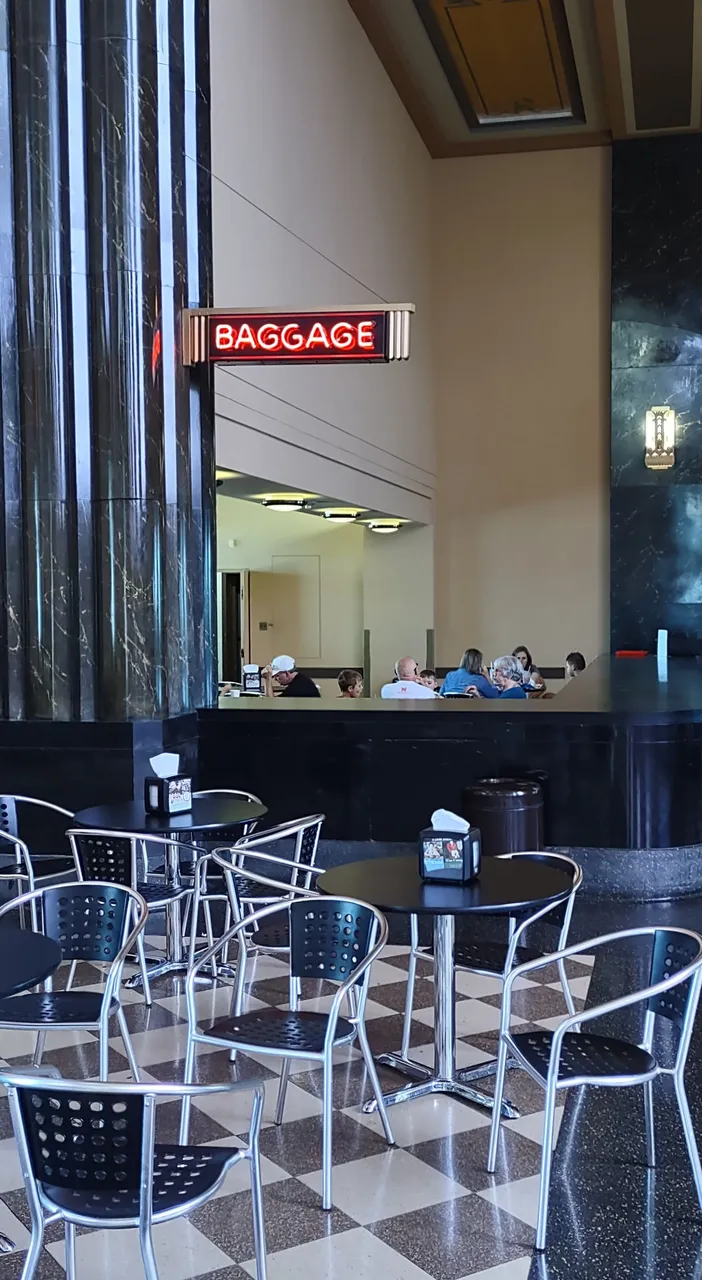
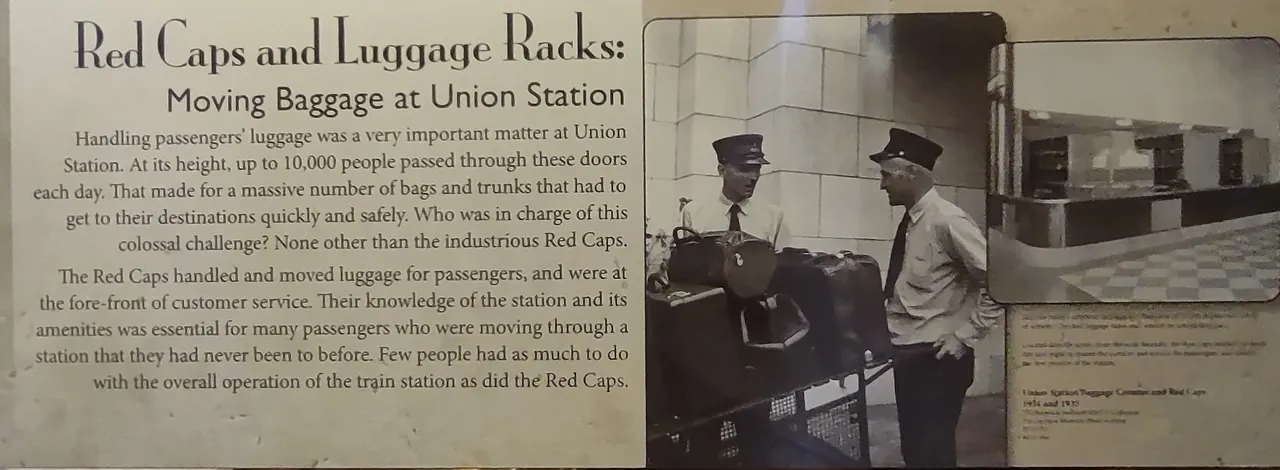
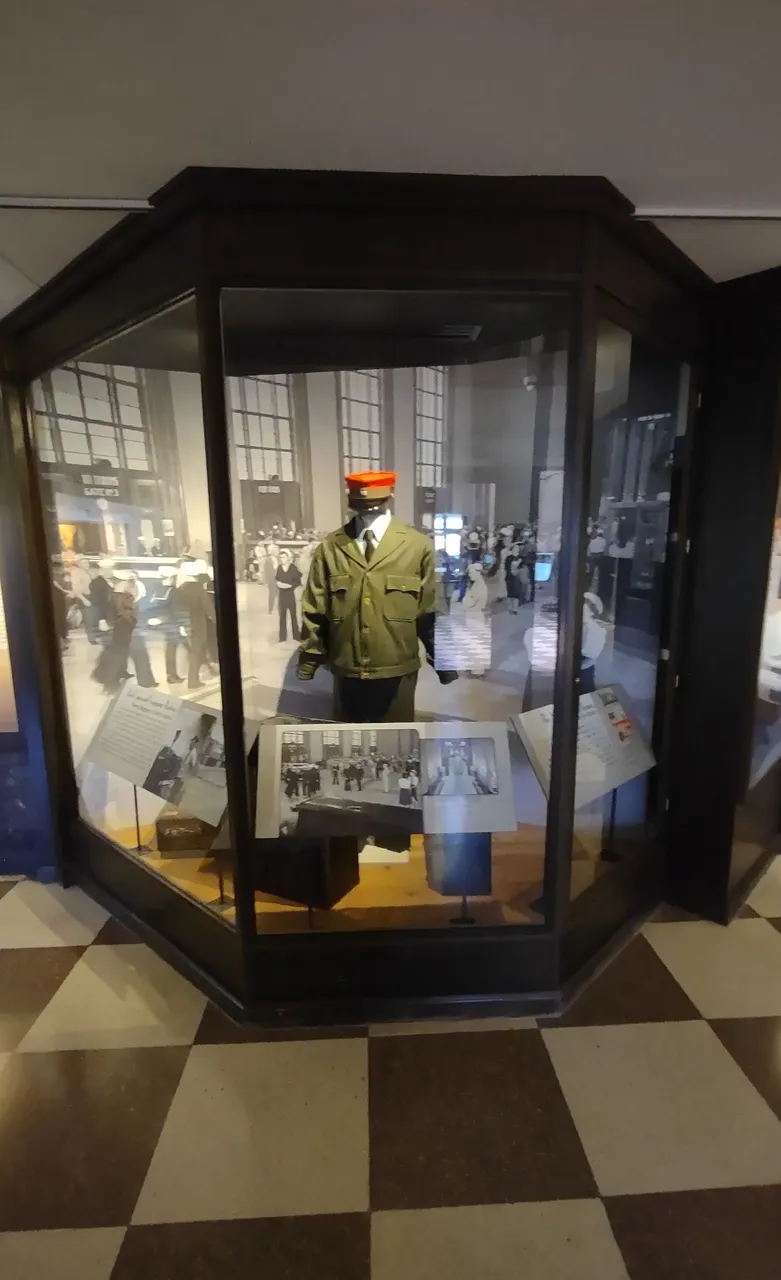
Today the baggage area is still in the same area and the counters still remain. The area is used as a dining area for a cafe that is over on that side of the terminal. I ate before coming so I didn't take a seat and get a bite to eat.
As you can tell by looking at the old photography of the baggage area much of it's originality is much the same. I can imagine the individuals working in this area got some good physical work in. A lot of the baggage were trunks and a lot luggage without the wheels you see on them today. I imagine passengers were happy to get rid of their luggage, haha.
The last photo is an exhibit of a uniform worn by baggage workers known as "Red Caps." Only did they work hard moving luggage around they were very important to passengers directing them where to go and answering any questions they had.
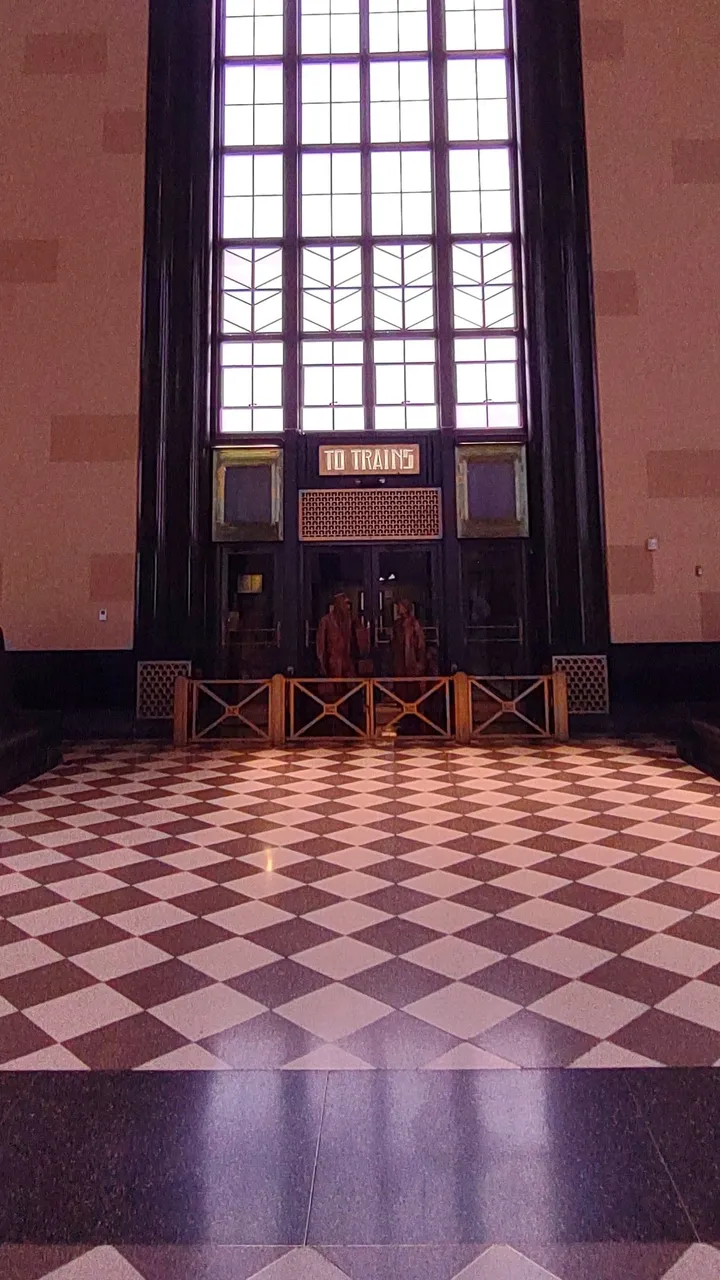

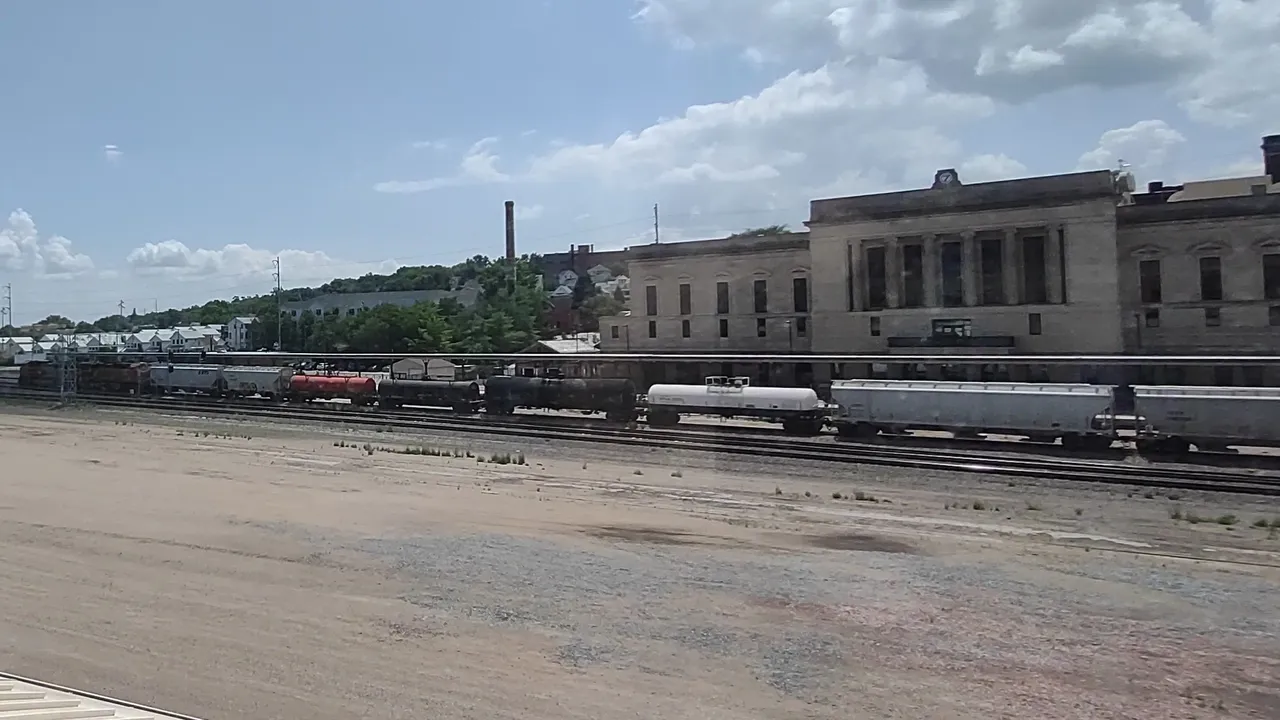
To get to the trains you would have passed through these gates. Once through them you would be directed to a staircase going down. Another older photograph that shows how the gates would have looked like with a bird's eyes view. Looks pretty impressive doesn't it? Many of the oldier buildings around the Union Station are still standing today. This area is also the start of Omaha's Old Market and nearby is the "Little Italy" community.
Today a lot of the tracks and gates to a particular tracks are no longer here. As you can see a lot of tracks are gone in the present day photo. A few tracks and a current day freight train are passing through the area. The building you see is the old Burlington Train Station that was built in 1898. It currently houses the local channel 7 news station.
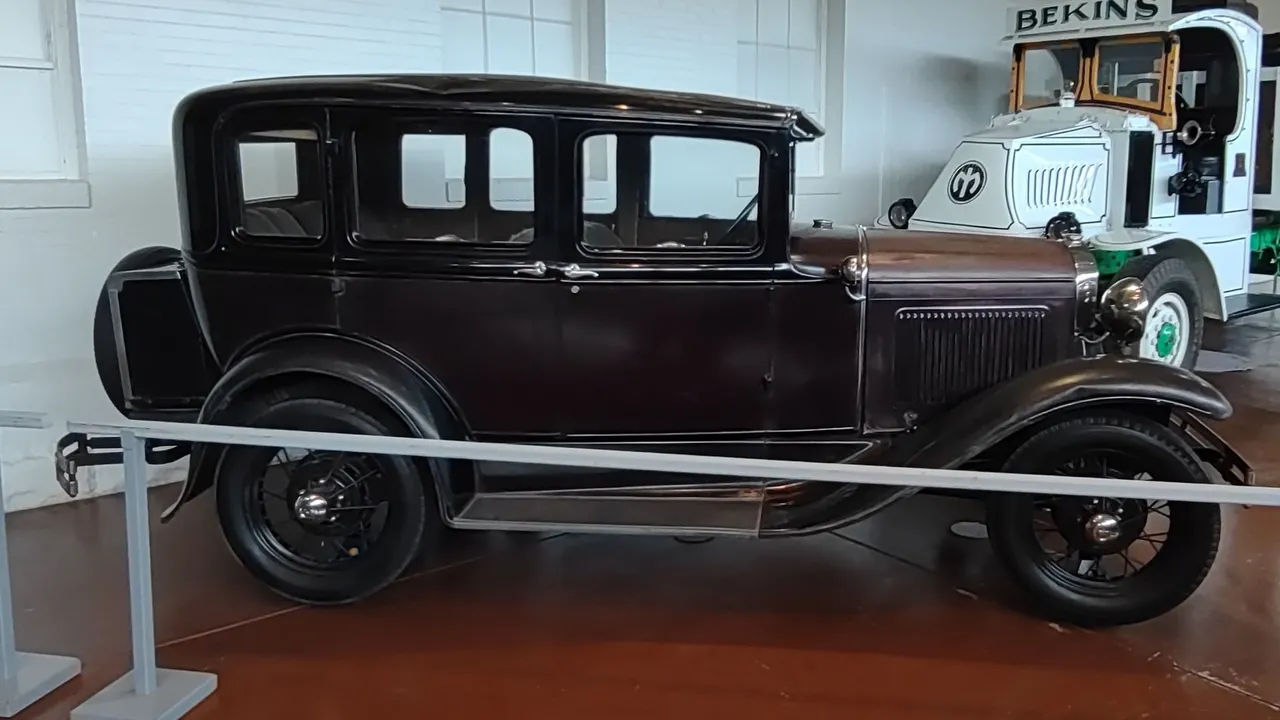
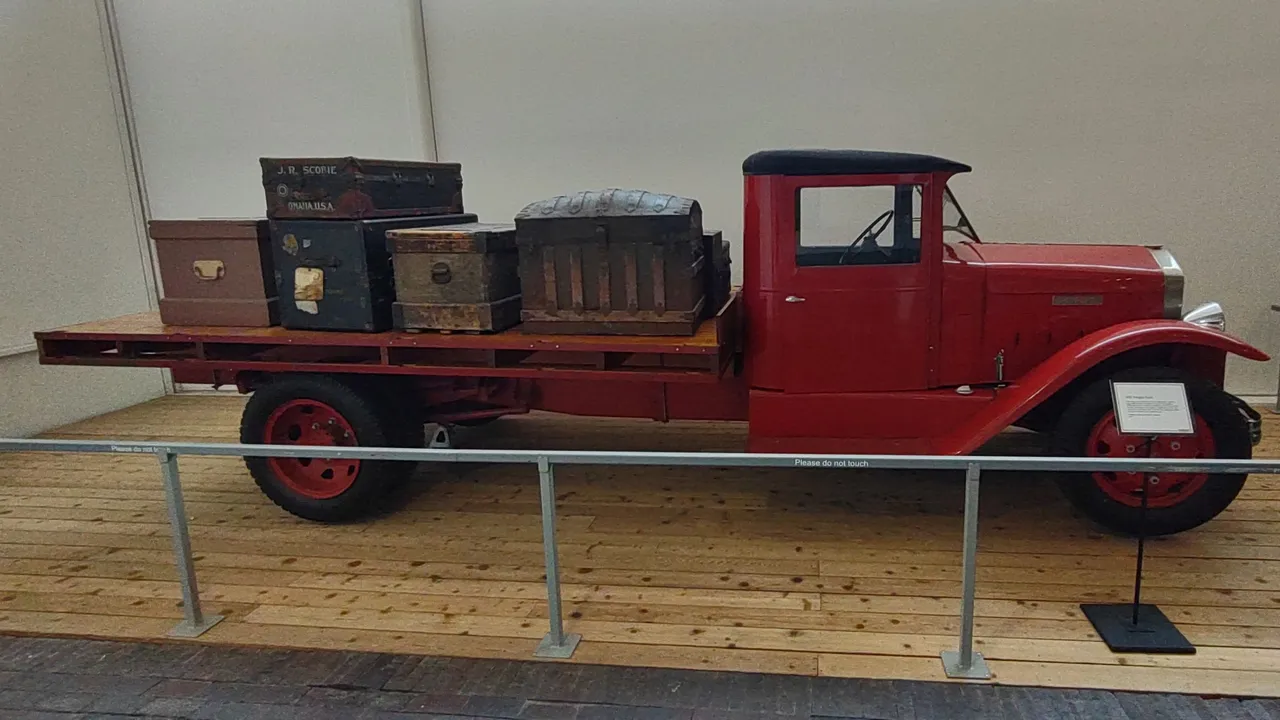
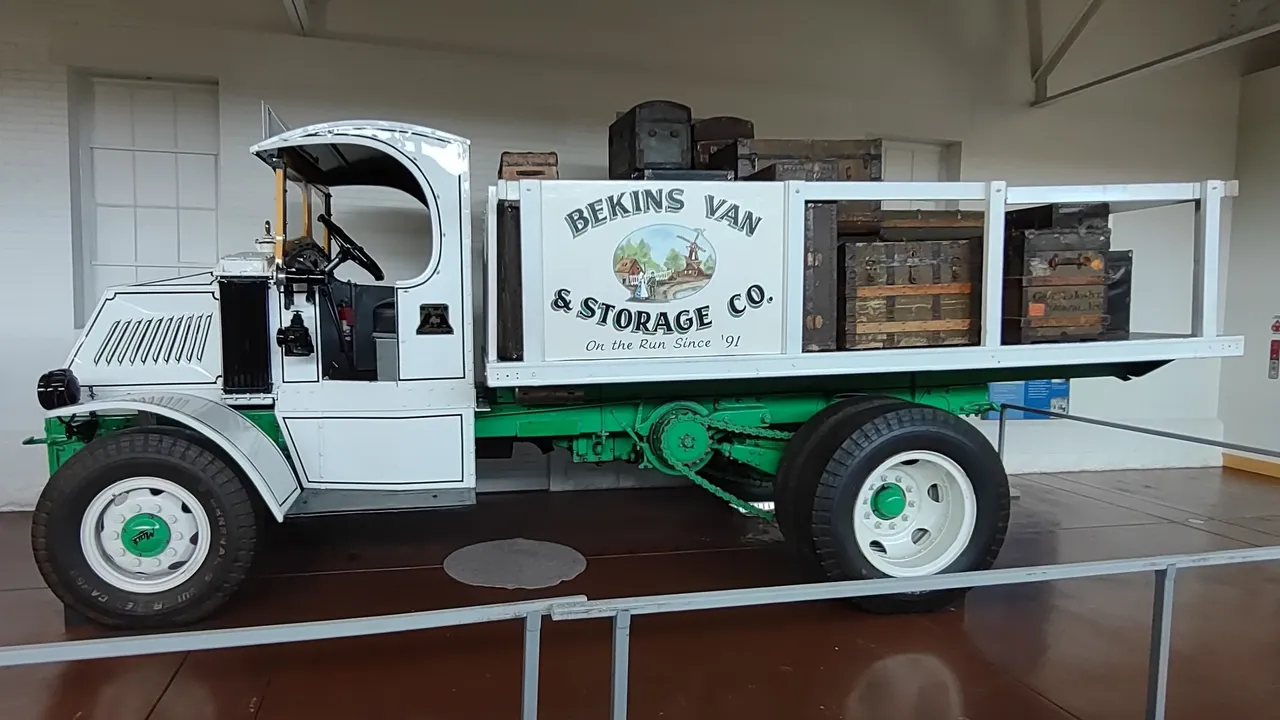
One of the first things I see getting to the bottom of the stairs is some vintage transportation. The first picture is a Ford Model A. It was produced from 1927 to 1931. They did not reveal what year it was.
Next up is a 1932 Douglas truck. This was one of the first work horse trucks where it often exceeded 100,000 miles while lots of other vehicles during this period didn't exceed 60,000 mile mark.
The last vehicle not marked with make, model or year was a local company that came to Omaha to get bigger. Originally they started in Sioux City, Iowa. Today they are still moving and doing quite well.
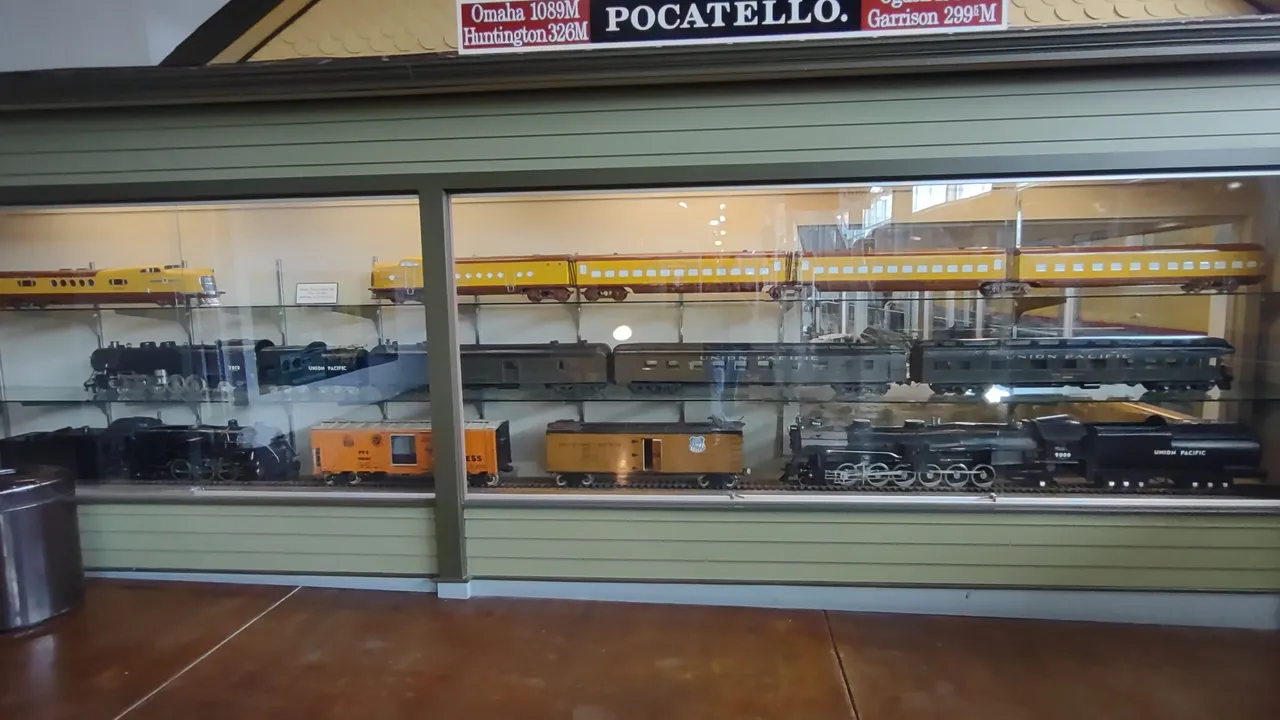
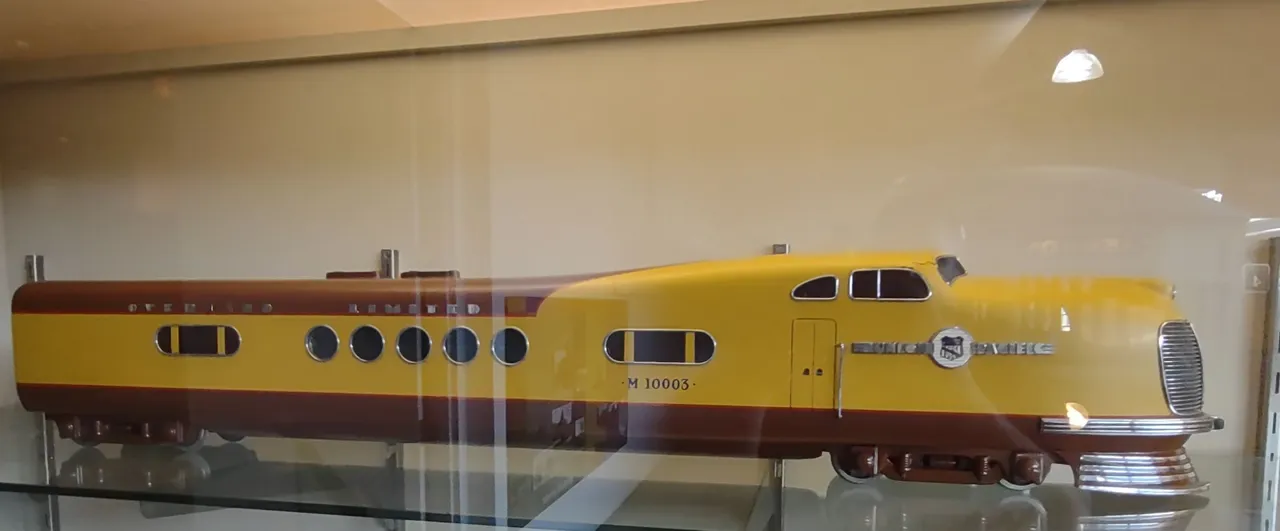
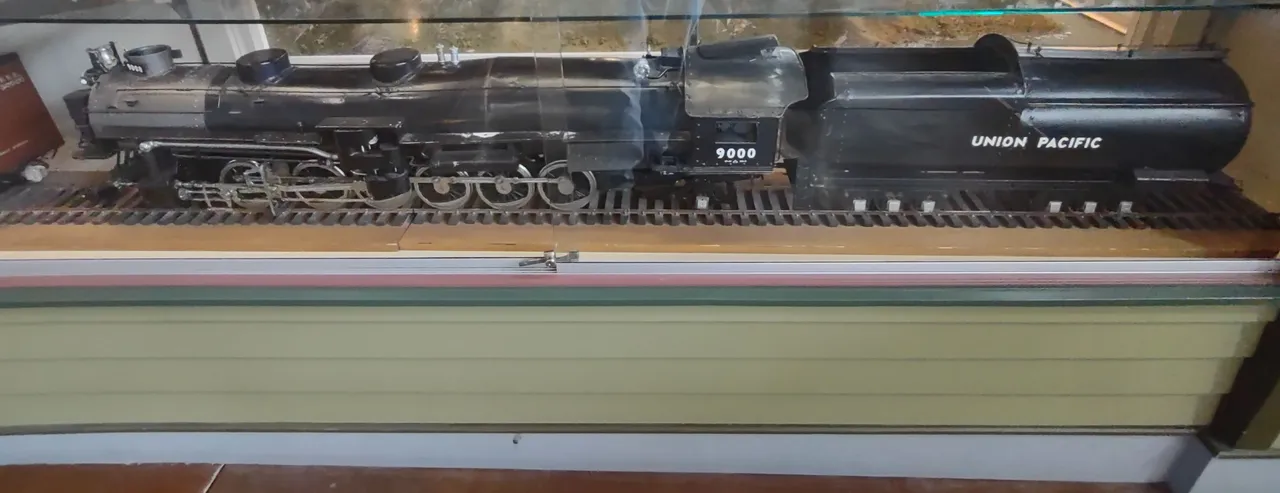
A very neat collection of nice sized models of some historic trains and passenger cars. I zoomed in on two of them I found interesting. First is a elegant looking train that looks very car like shaped. Looks fast and curvy doesn't it. Second is something I just have a hard time not looking at, an oldier steam engine locomotive. So many things I love about it but probably the biggest thing is it's size, weight, and solid frame. Also seeing the arms that propel the wheels fascinates me to.
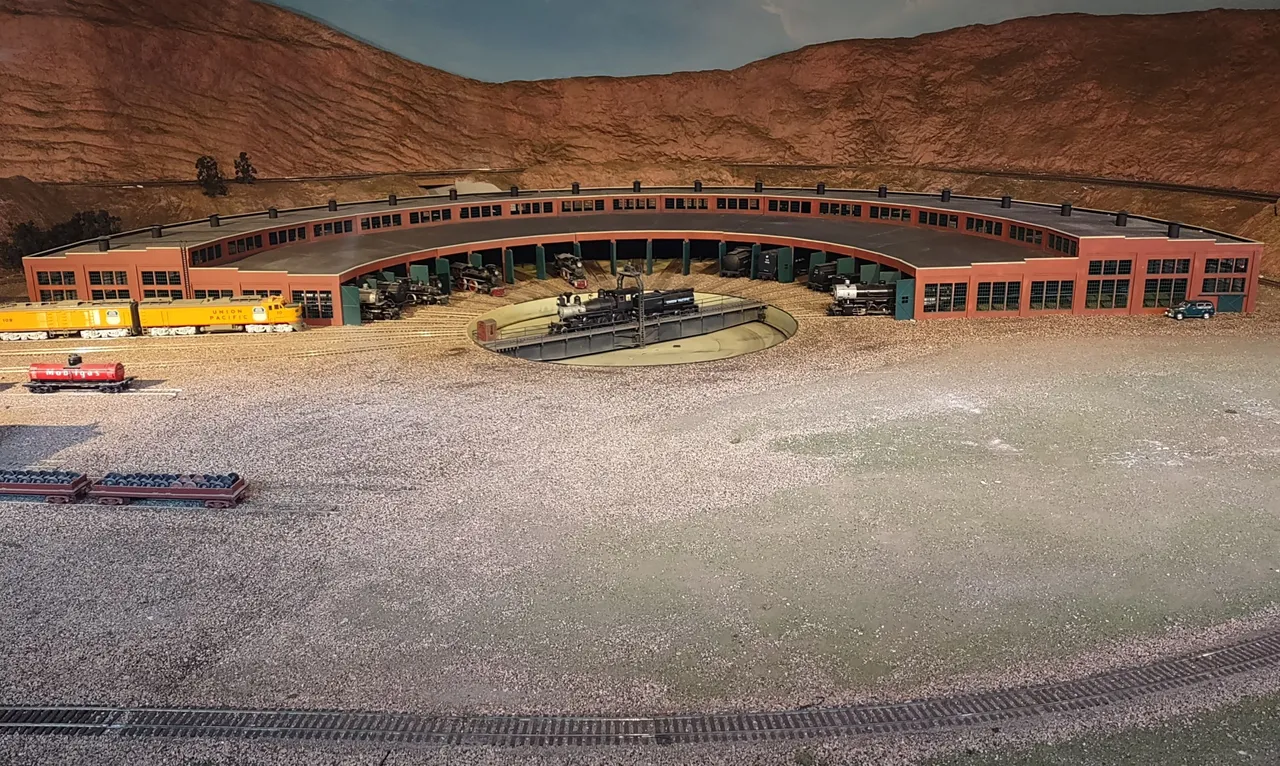
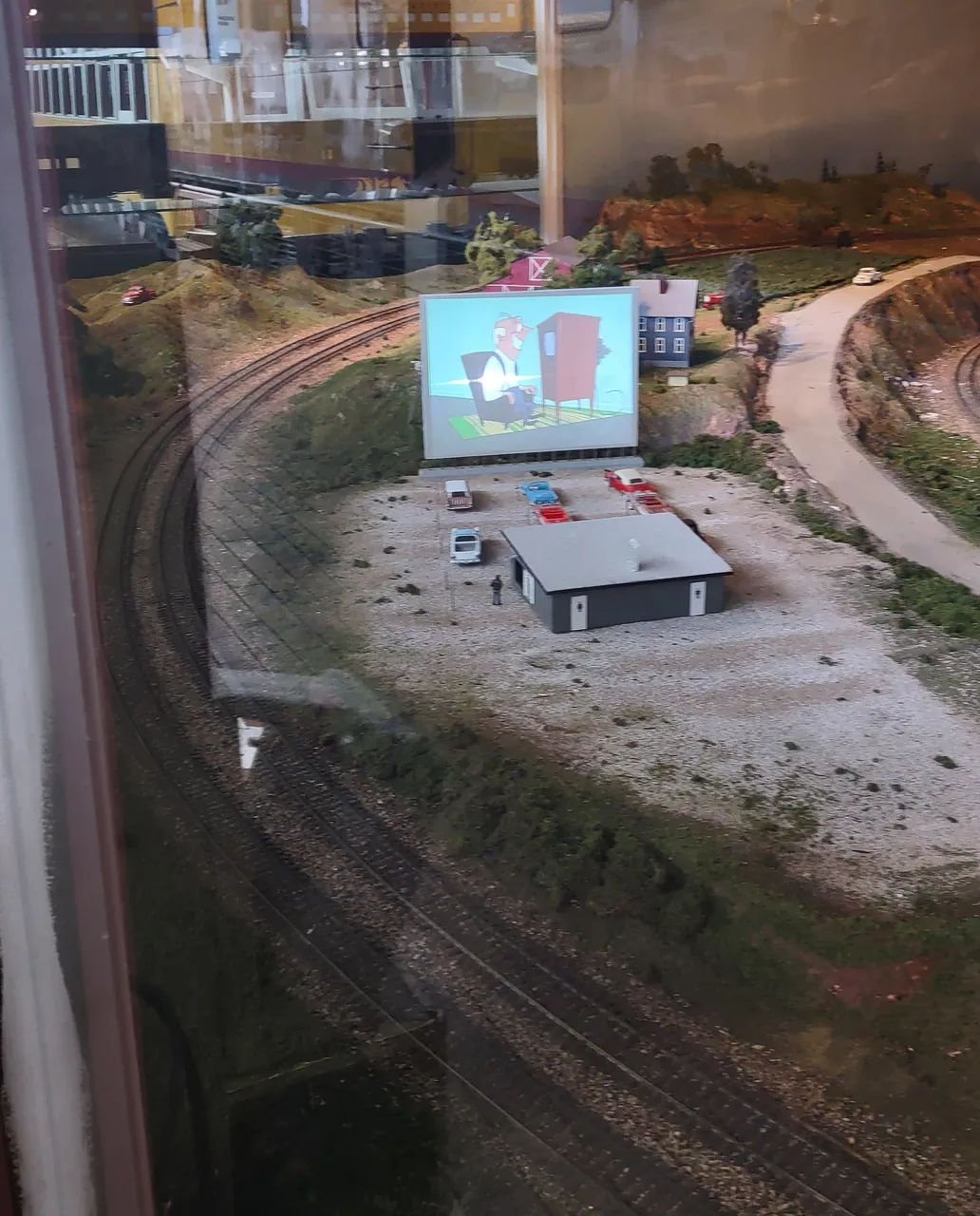
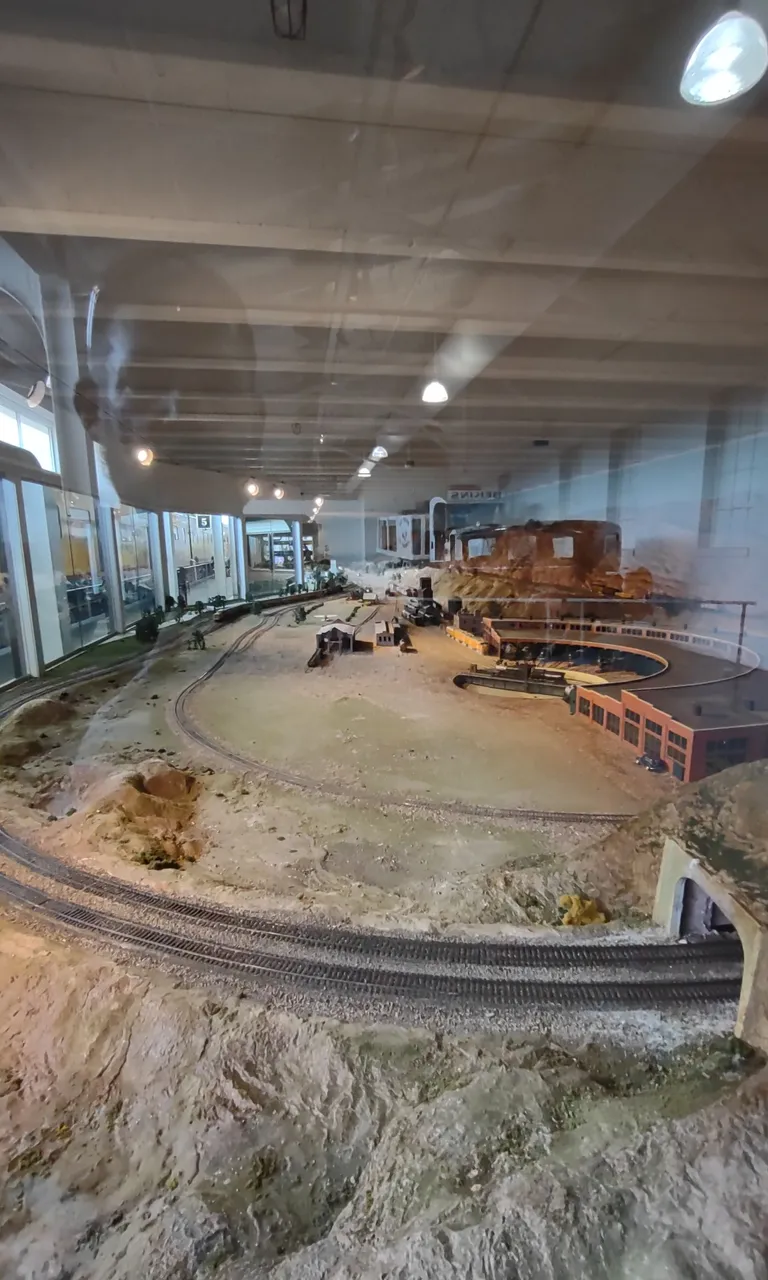
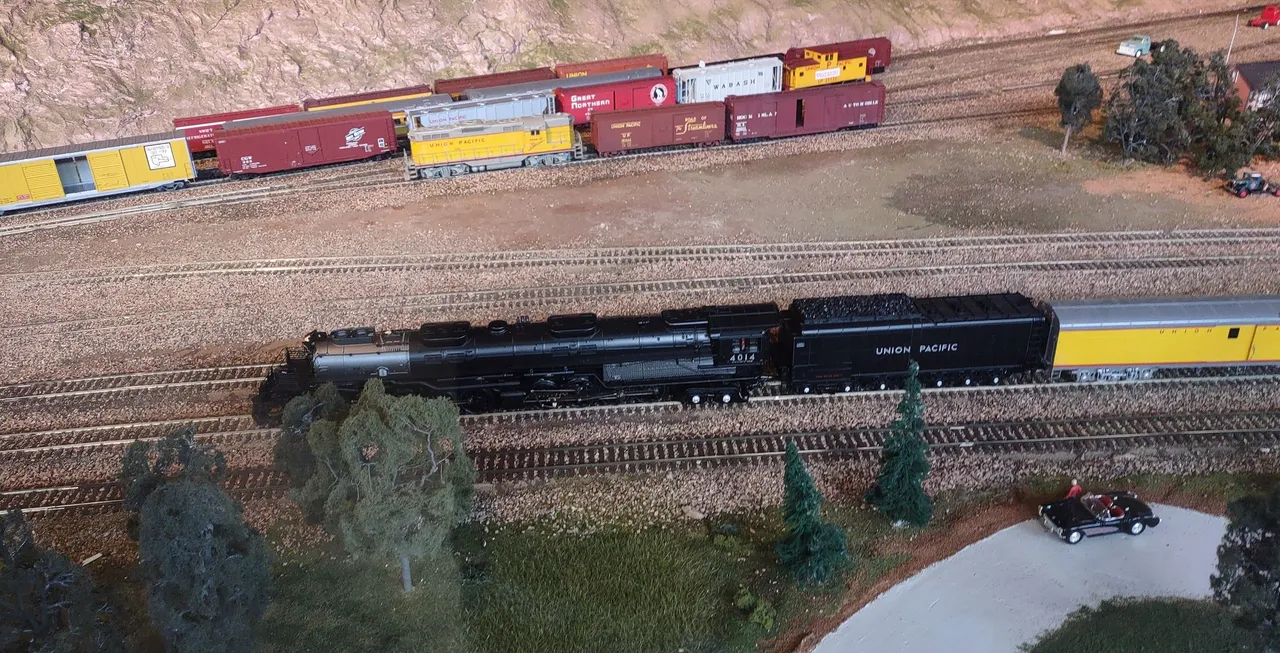
Hey if your a kid and your drug to a museum to see trains what better to see than a large electric train set? I apologize for the glares they were unavoidable. Hey a free picture of me in one of the reflections, haha. Through out it's lengths there are buttons to push to set a few trains in motions. I liked the detailed models of trains, buildings, and landscape. What is interesting is there is a drive through movie theater and it actually plays an old cartoon flick.
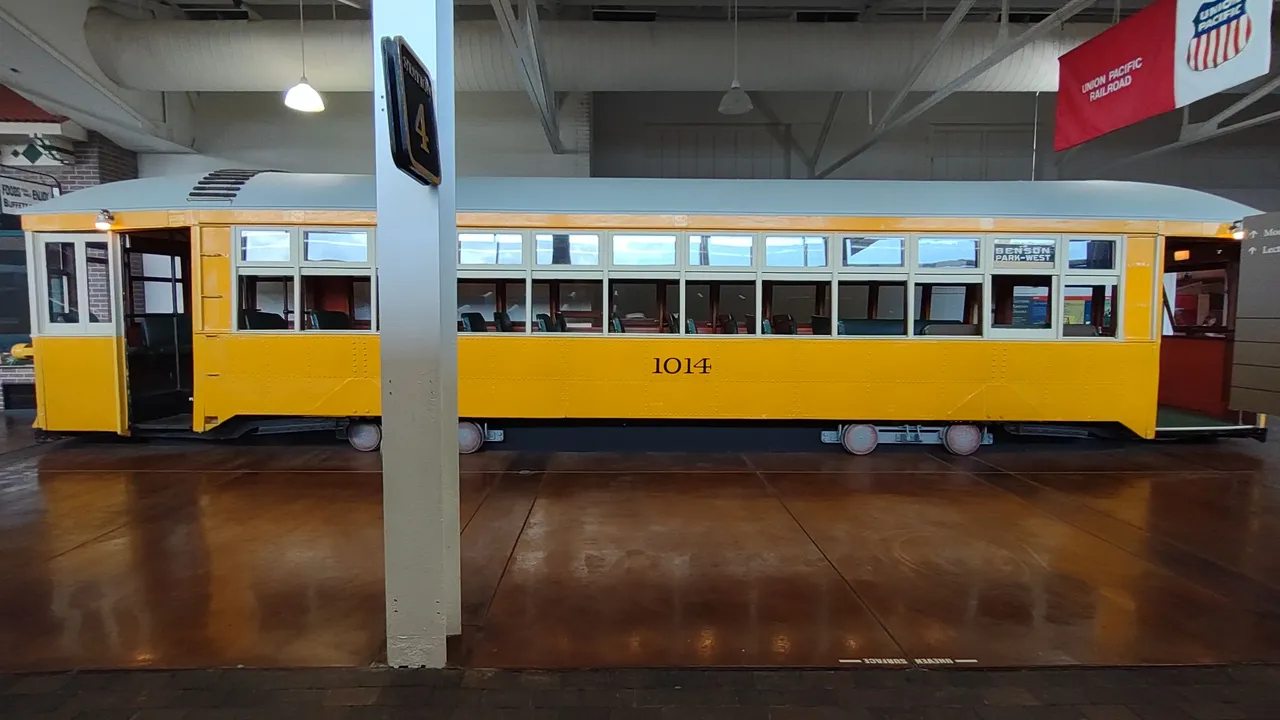
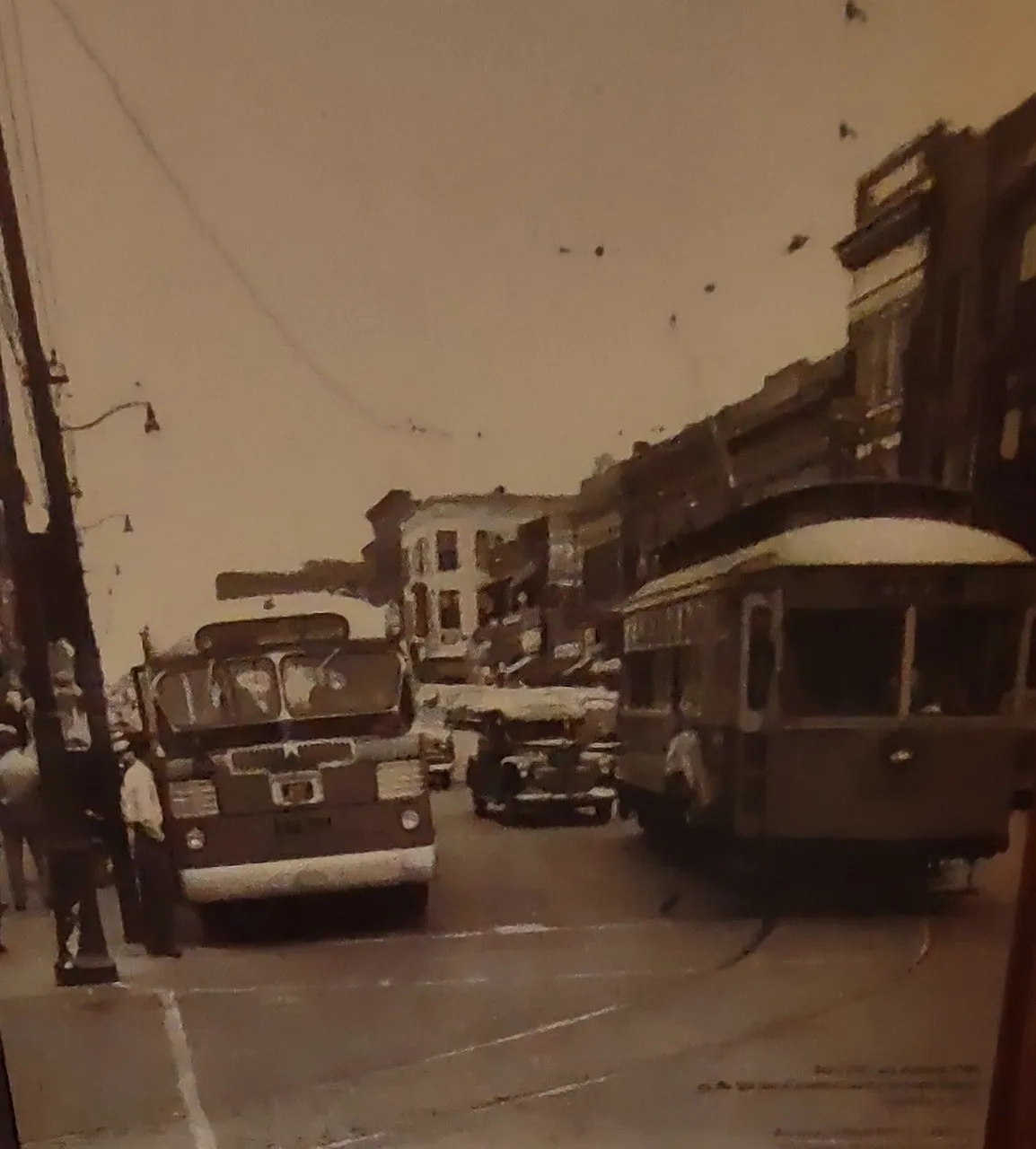
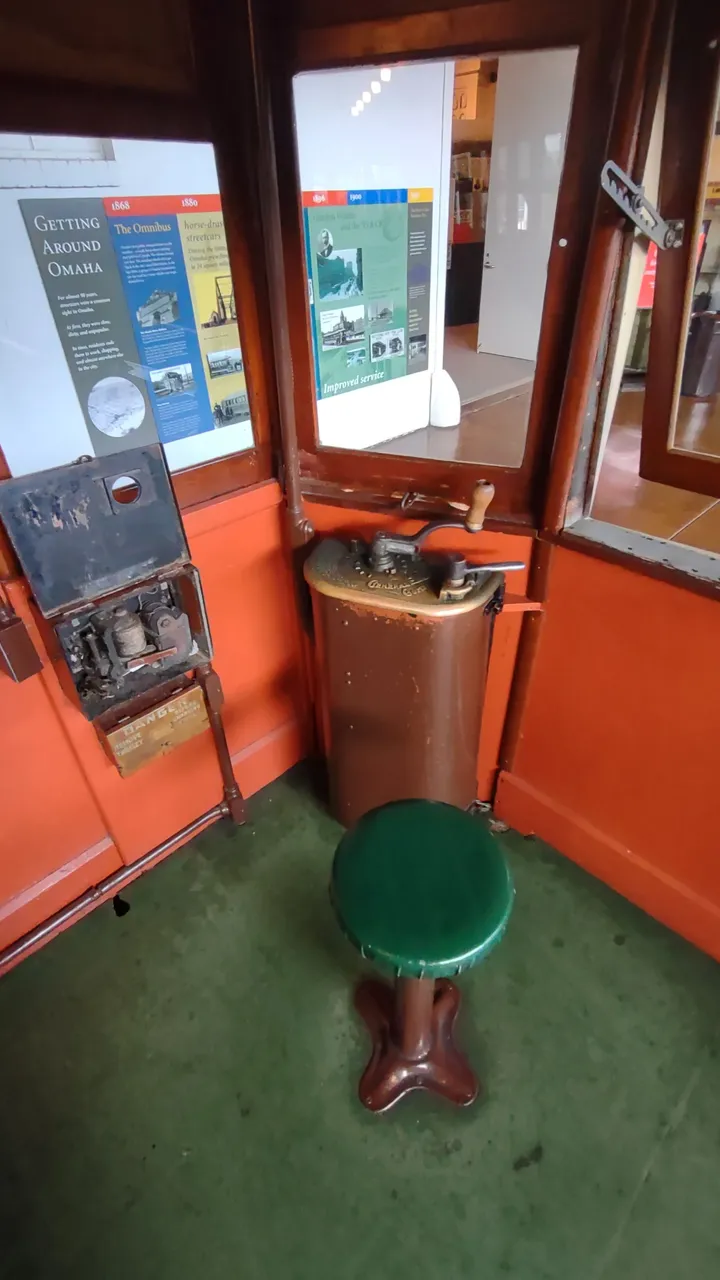

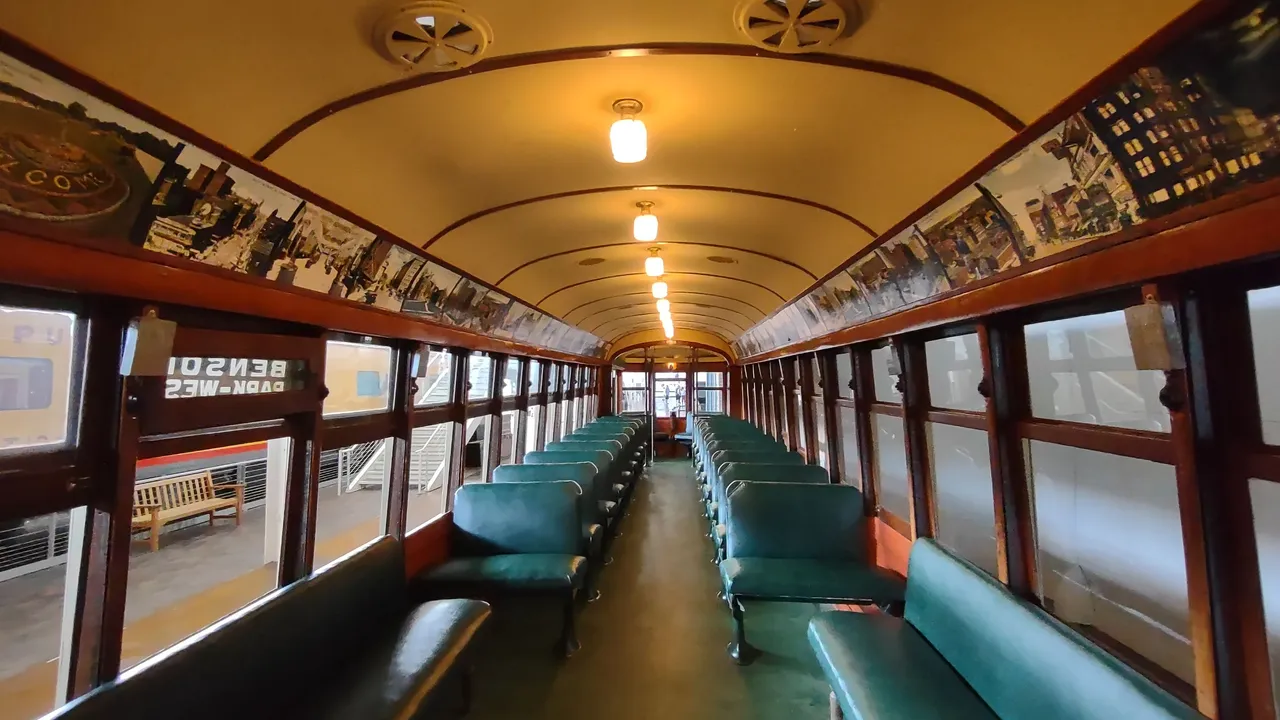

What you see is street car number 1014. This car was used in Omaha and carried people to stops throughout the city. It also brought people across the Missouri River via a street car bridge to neighboring Council Bluffs, Iowa. Oh that would have been a fun ride. The second photo is the actual car in use in 1914. The last street car ran in Omaha in 1955. I so wish they would have kept it.
It was nice walking in this street car and taking a seat in its conductor and passenger seats. It's a nice touch that it's was restored with many historic photos of the city. I blew up one to show some of the historic old market.
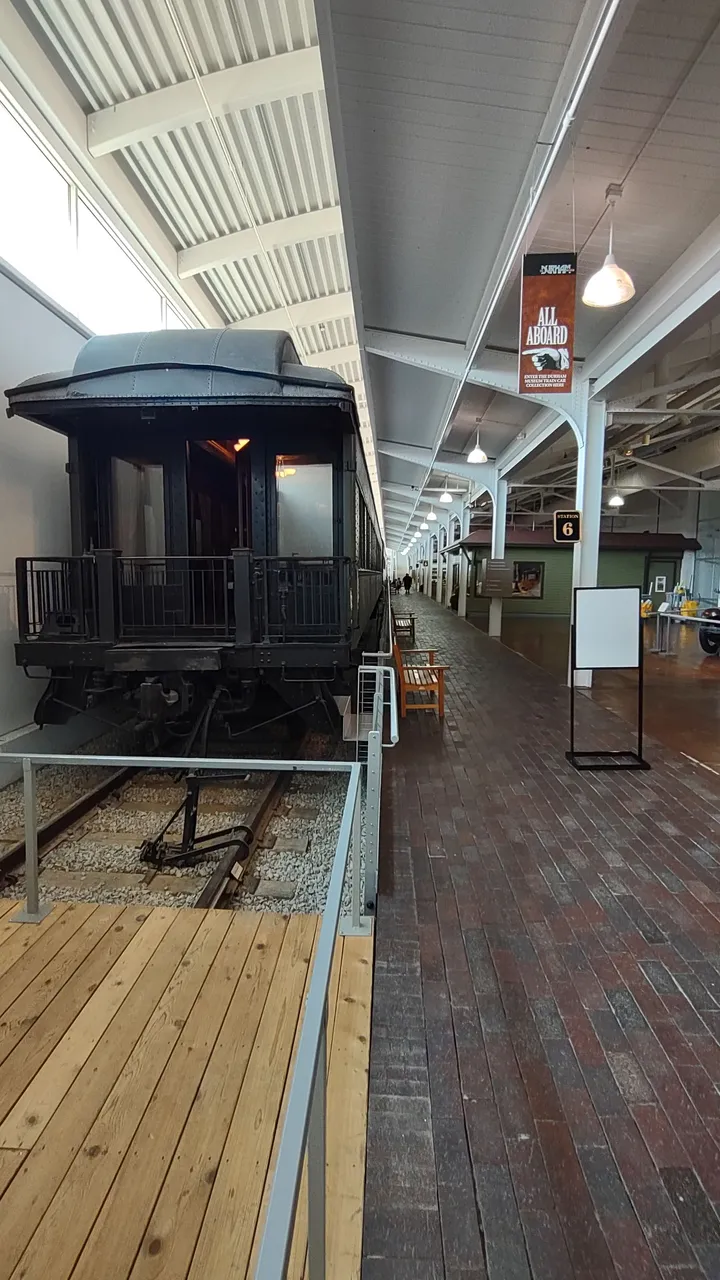
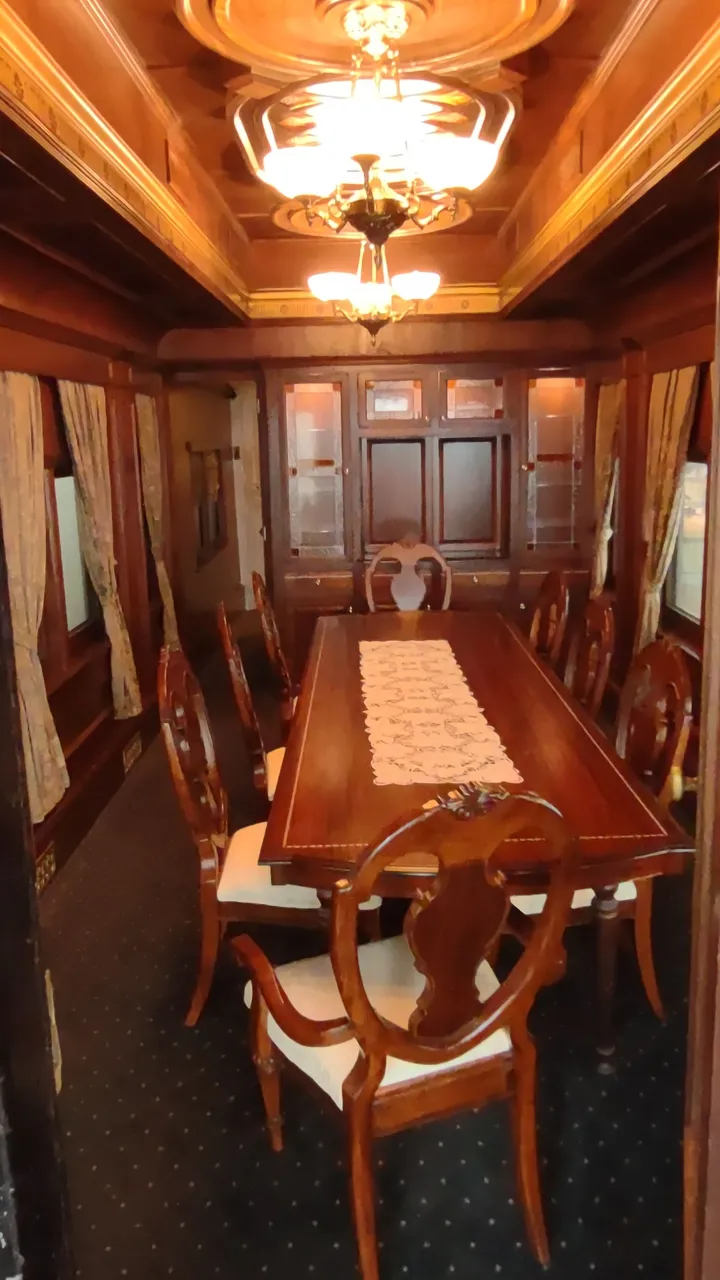
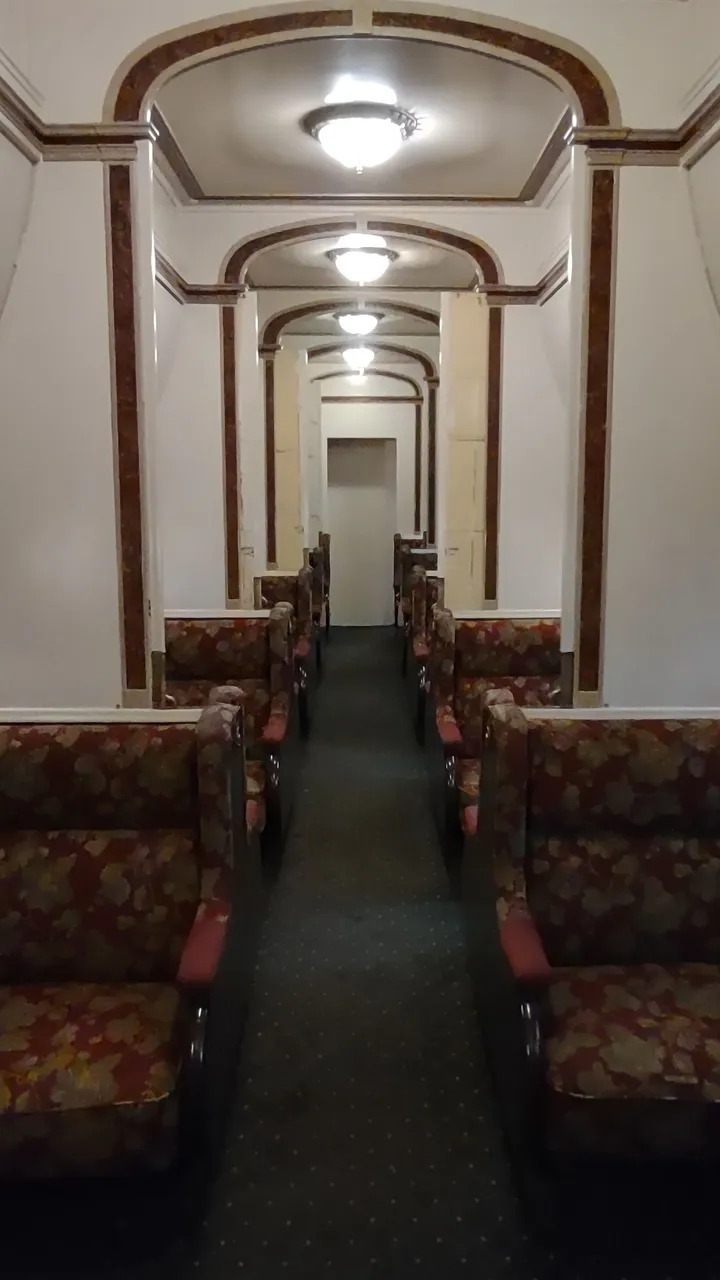
The next thing I did was walk inside three different connected passenger cars. The pictures above are from 1924 Cornhusker Club car. Love the full size dinning room table it's just shows the luxury traveling by train back than, of course if you could afford it. The seating in the main cabin is spacious and comfortable.
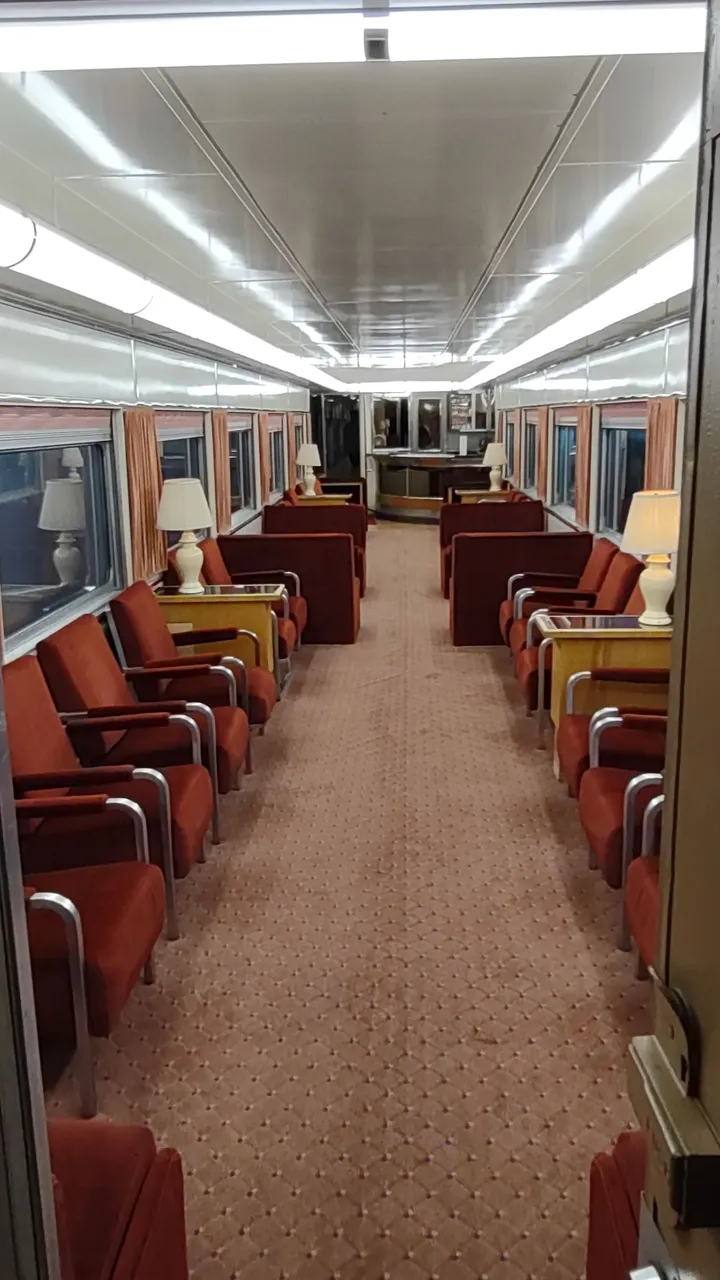
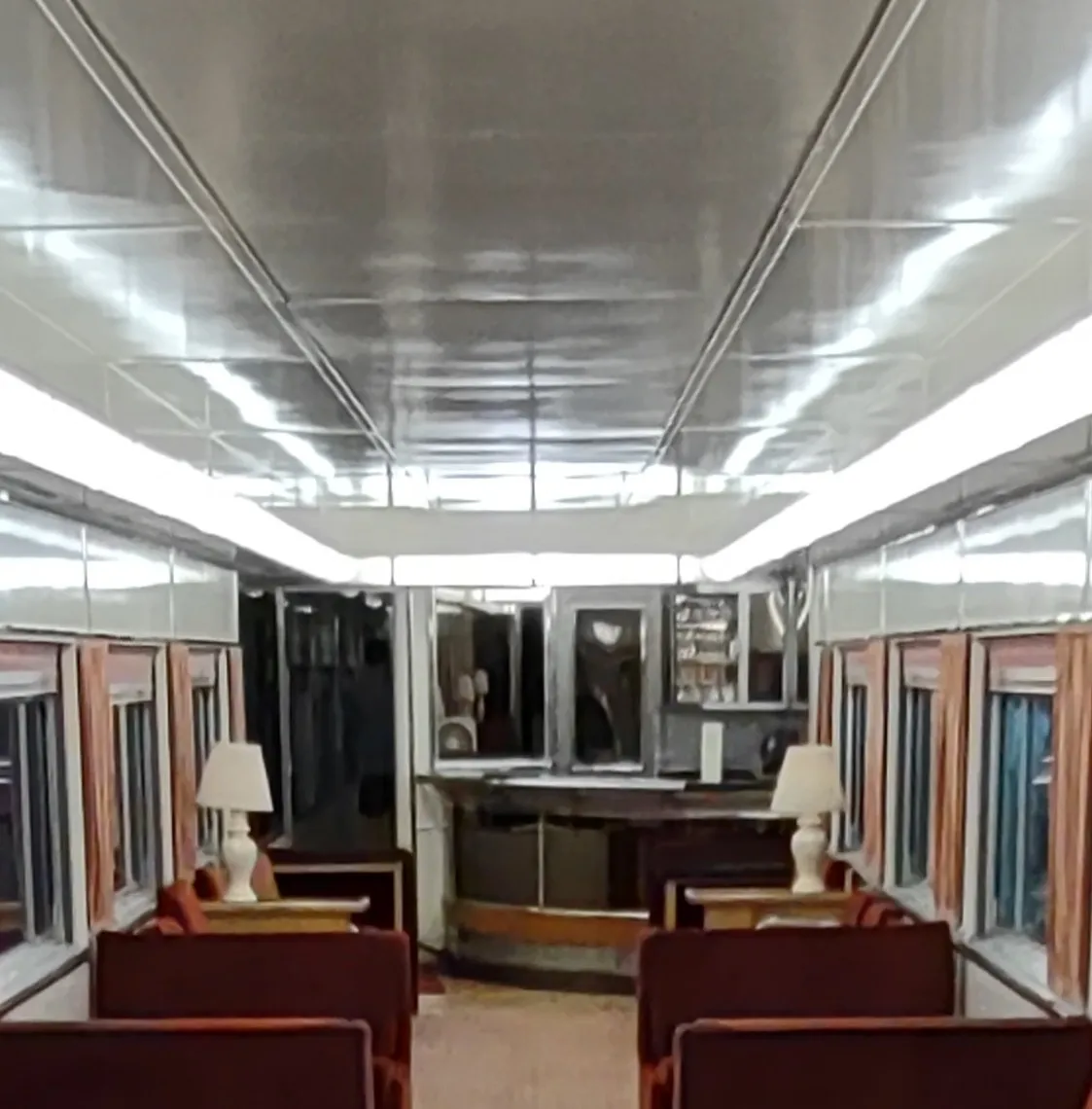
The next car I walked through was the Southern Pacific Club Car. This was built in 1949 and I thought it would be a great car to relax in if going on long trip. Nice spacious seats and has a wet bar to order drinks. Looks like a good place to read, write, or look out the window at the scenery.
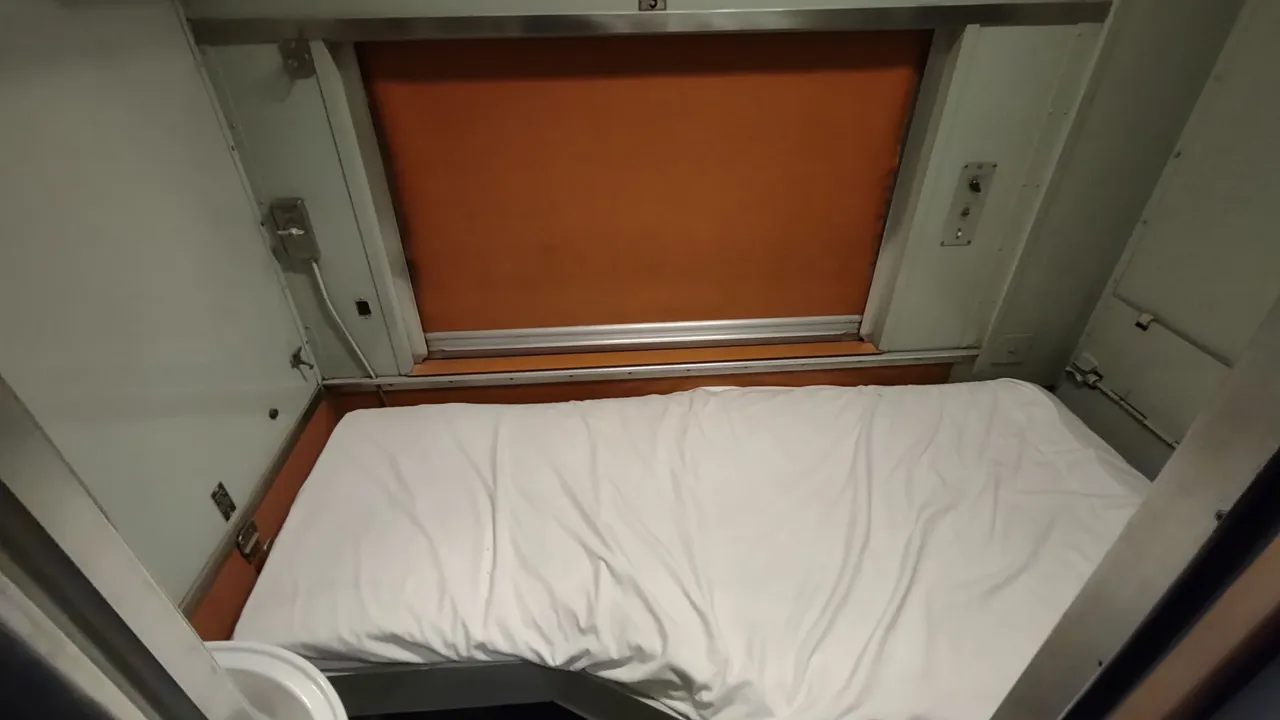
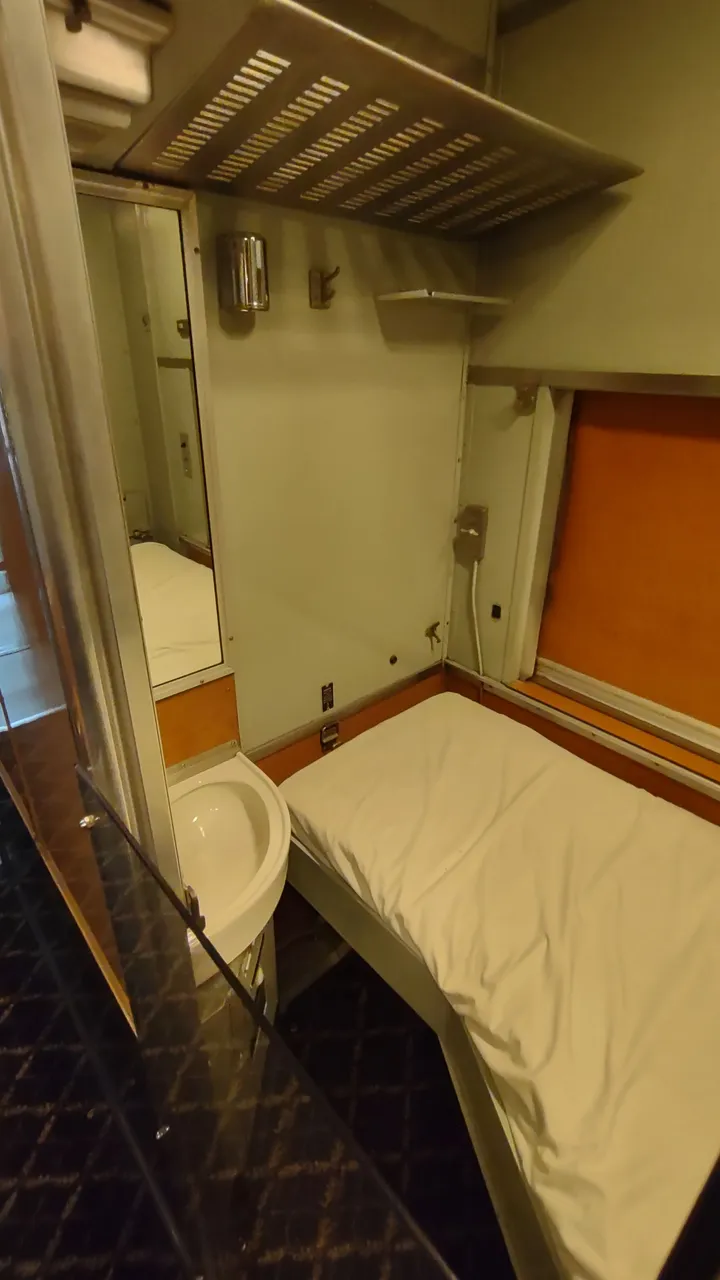
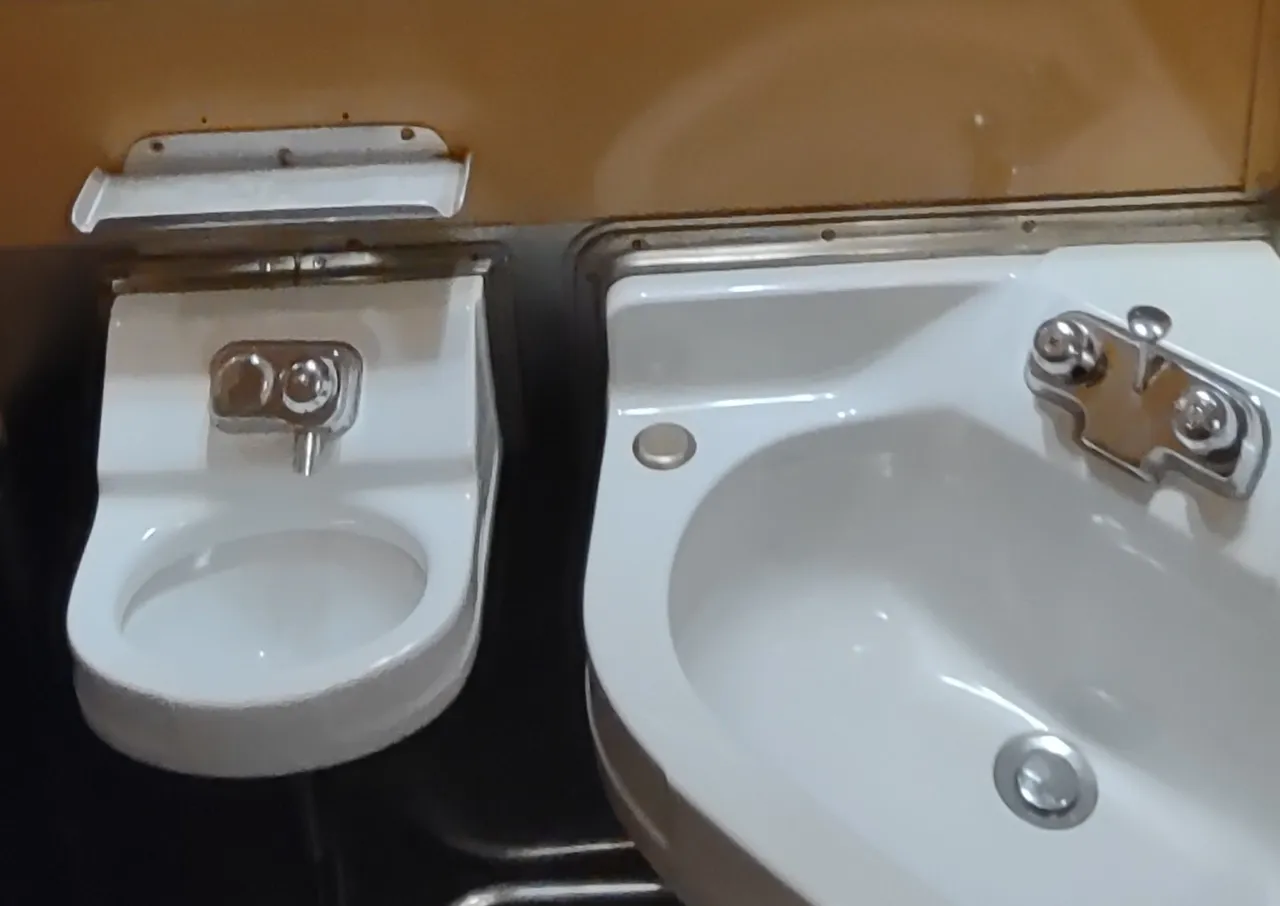
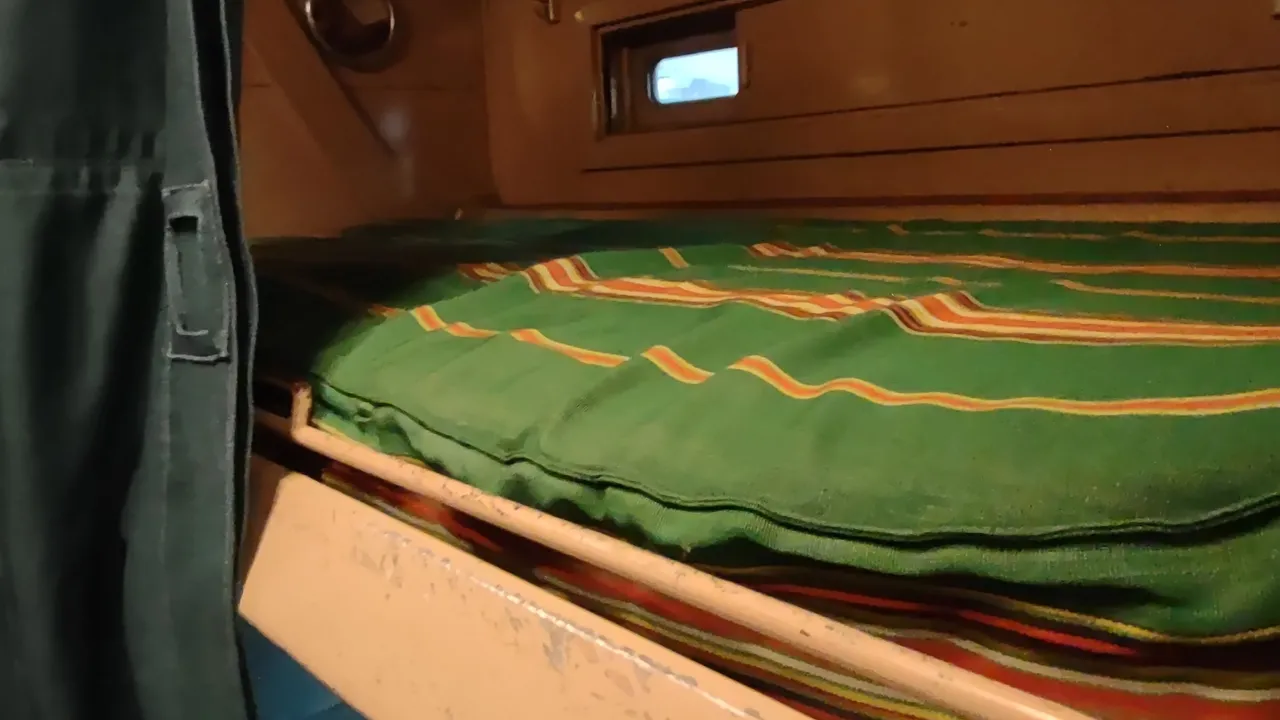
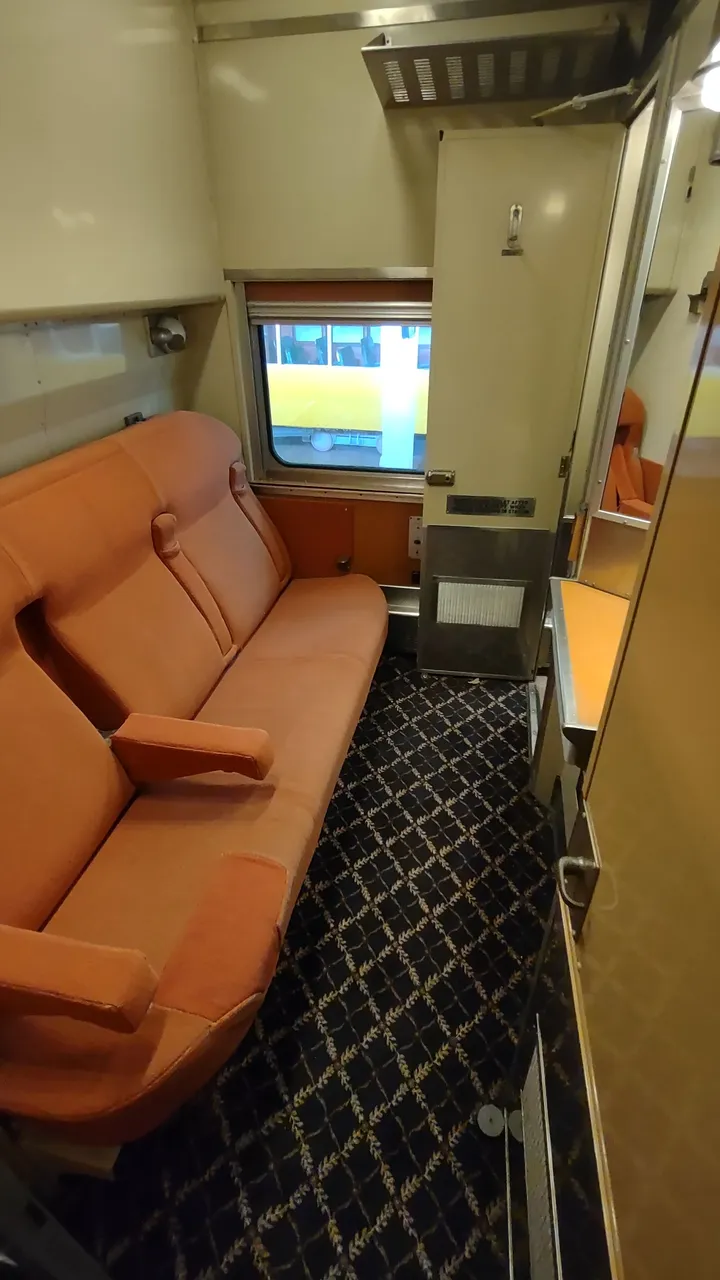
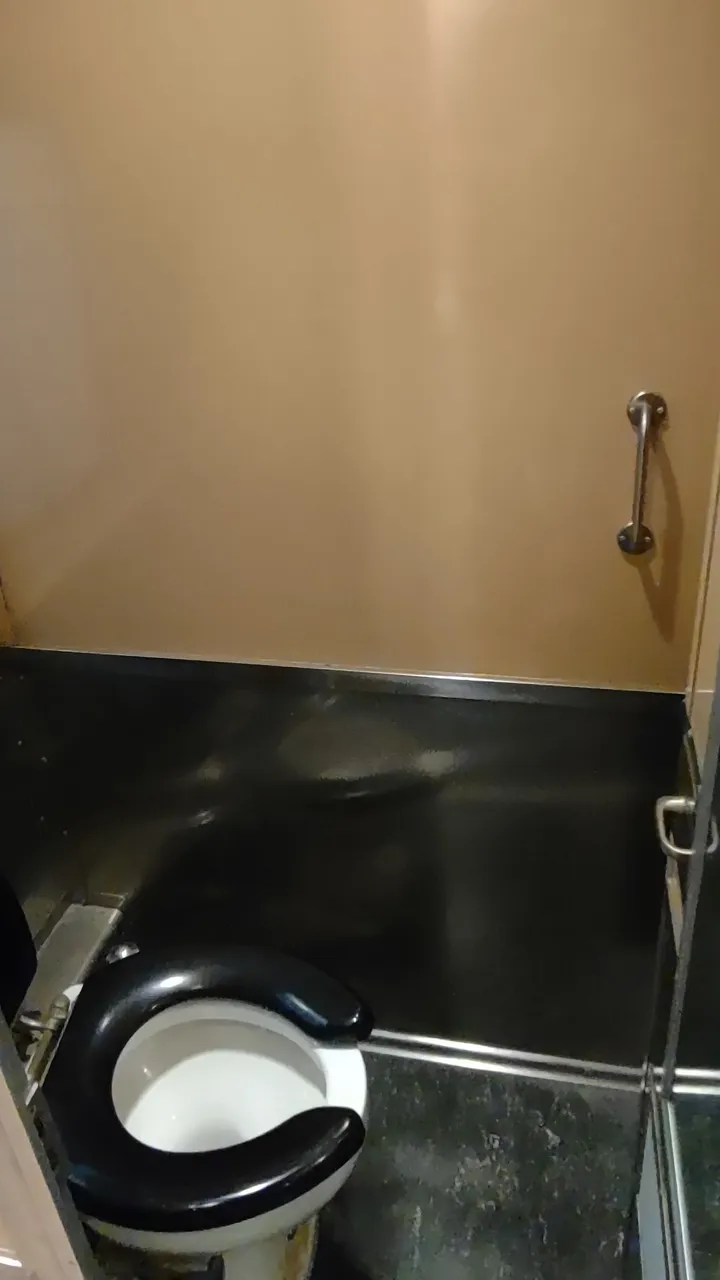
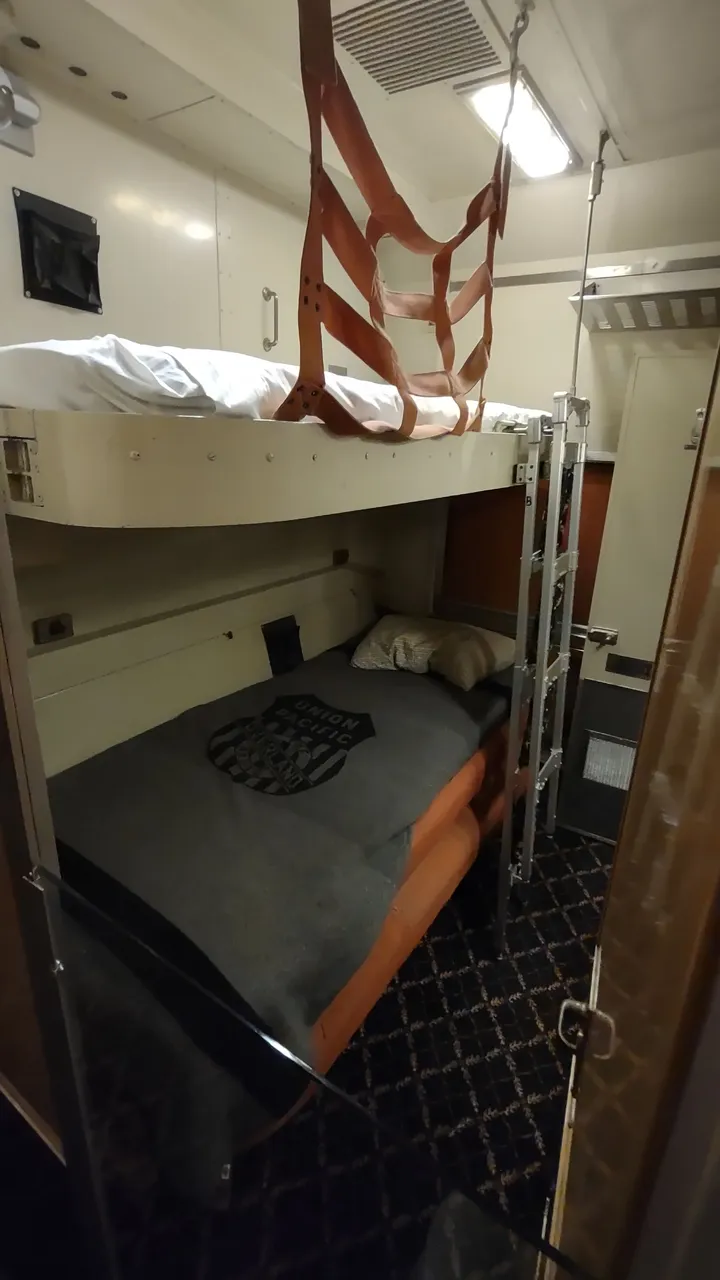
The last and third passenger car I walked in was the National Command 1202. This is a sleeper car that was built in 1956. It contained 6 singular rooms, 4 double bed rooms, 6 open benches with upper reach's, and I think 4 restrooms. I've flown on many aircraft and let me tell the restrooms (lavatories) on them are small. The rest rooms I seen in this car don't make me feel claustrophobic. A trip from Omaha to Los Angeles took 2 days so this type of car would have seen much use to catch some shut eye.
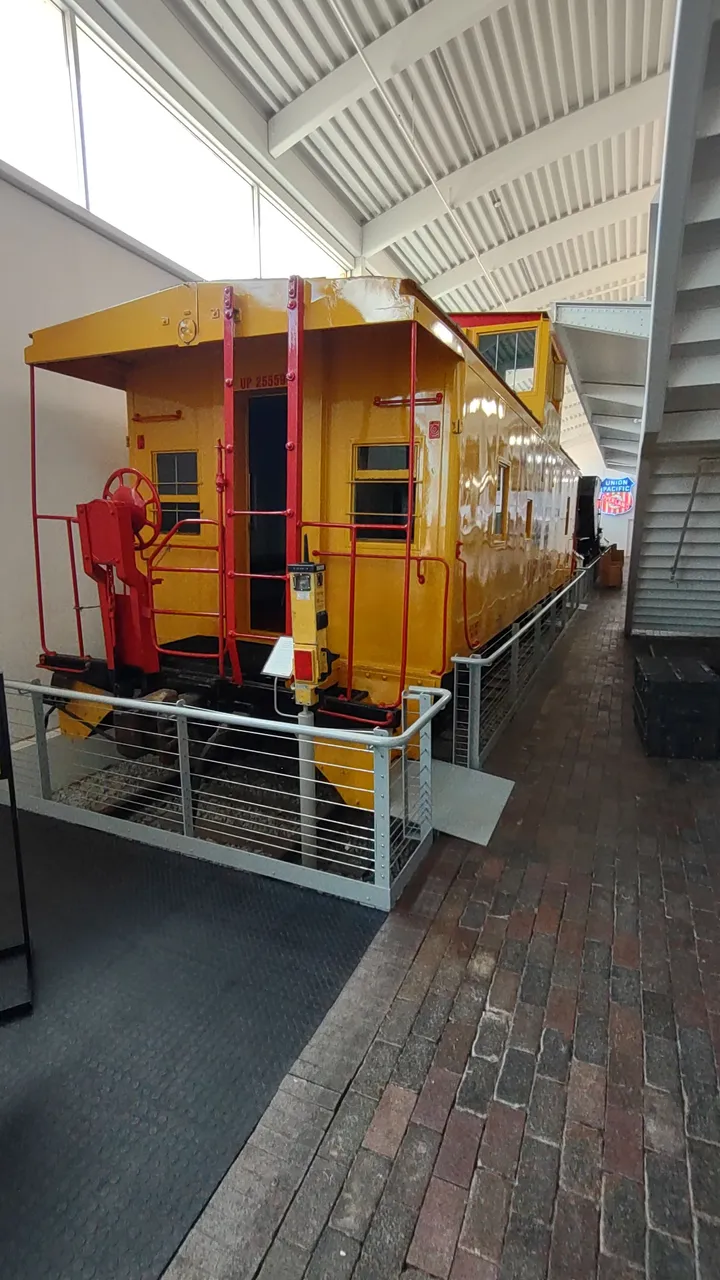
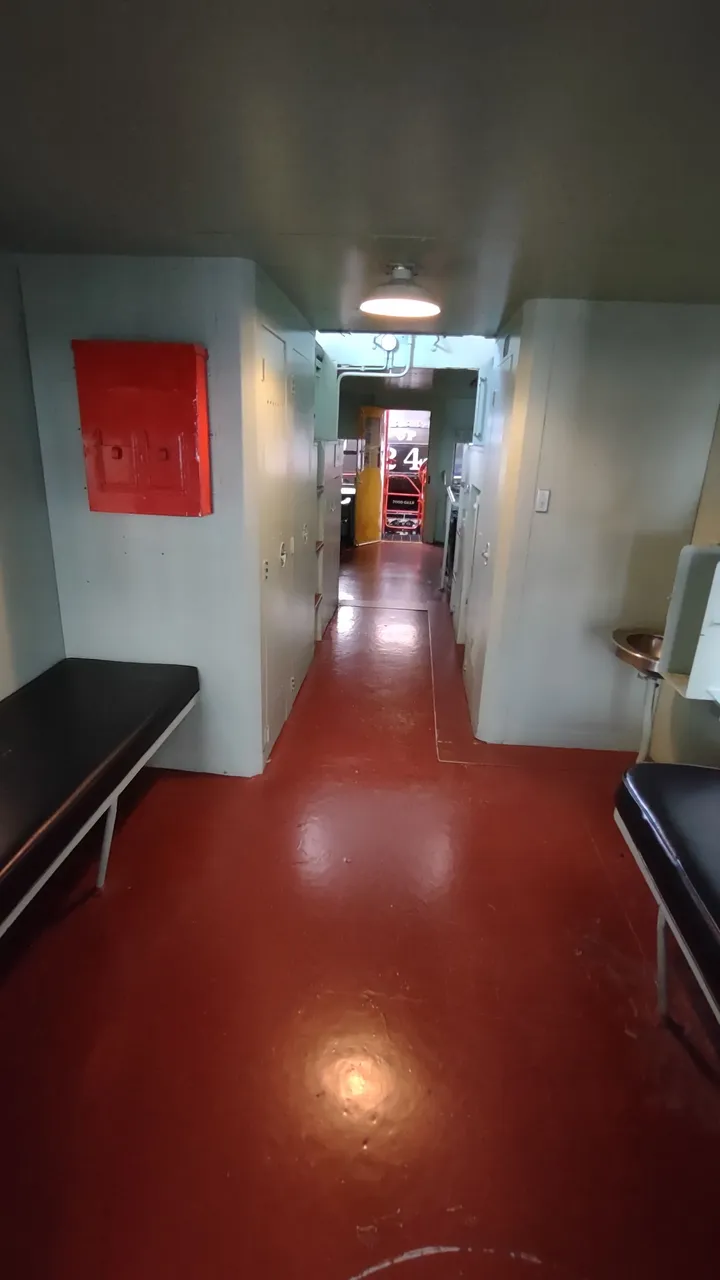
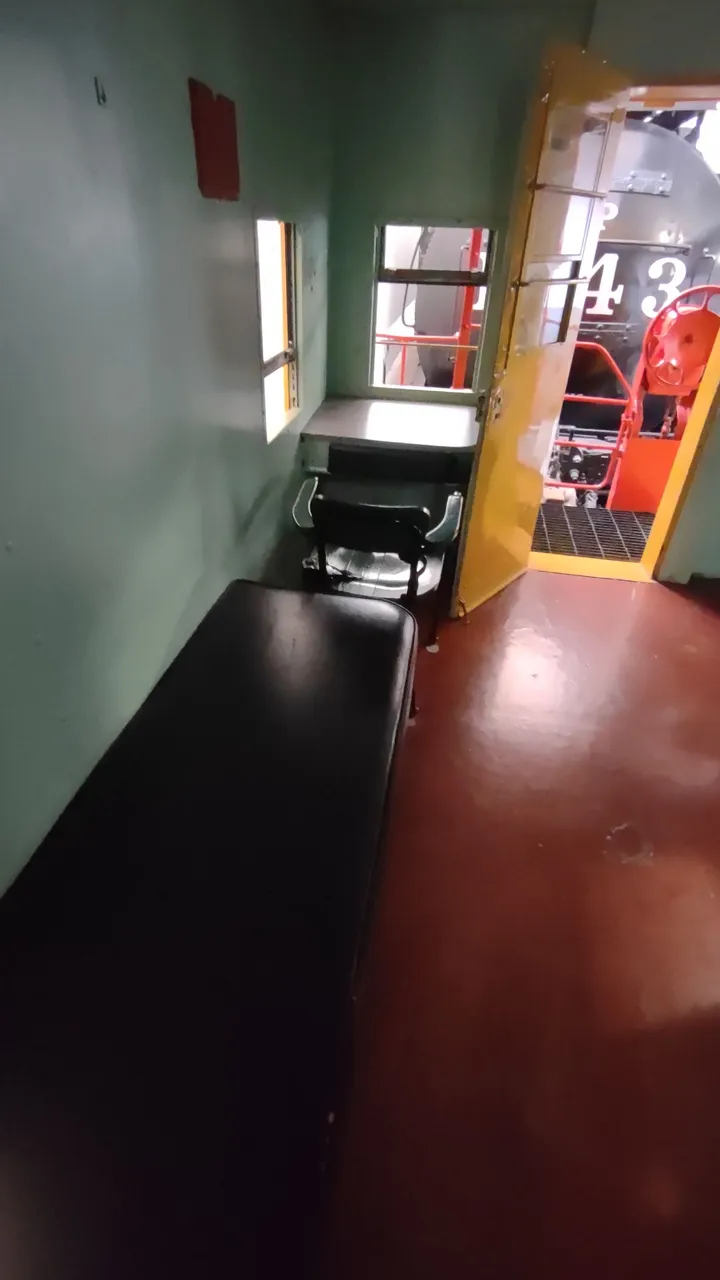
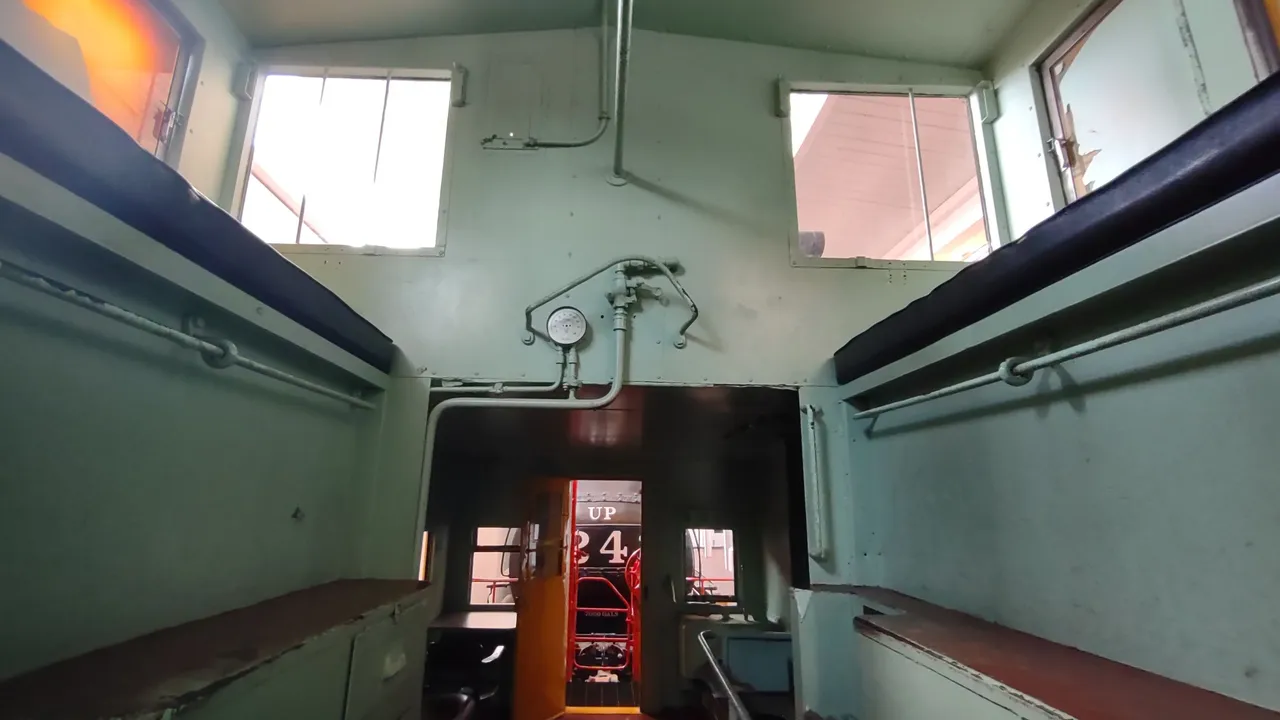
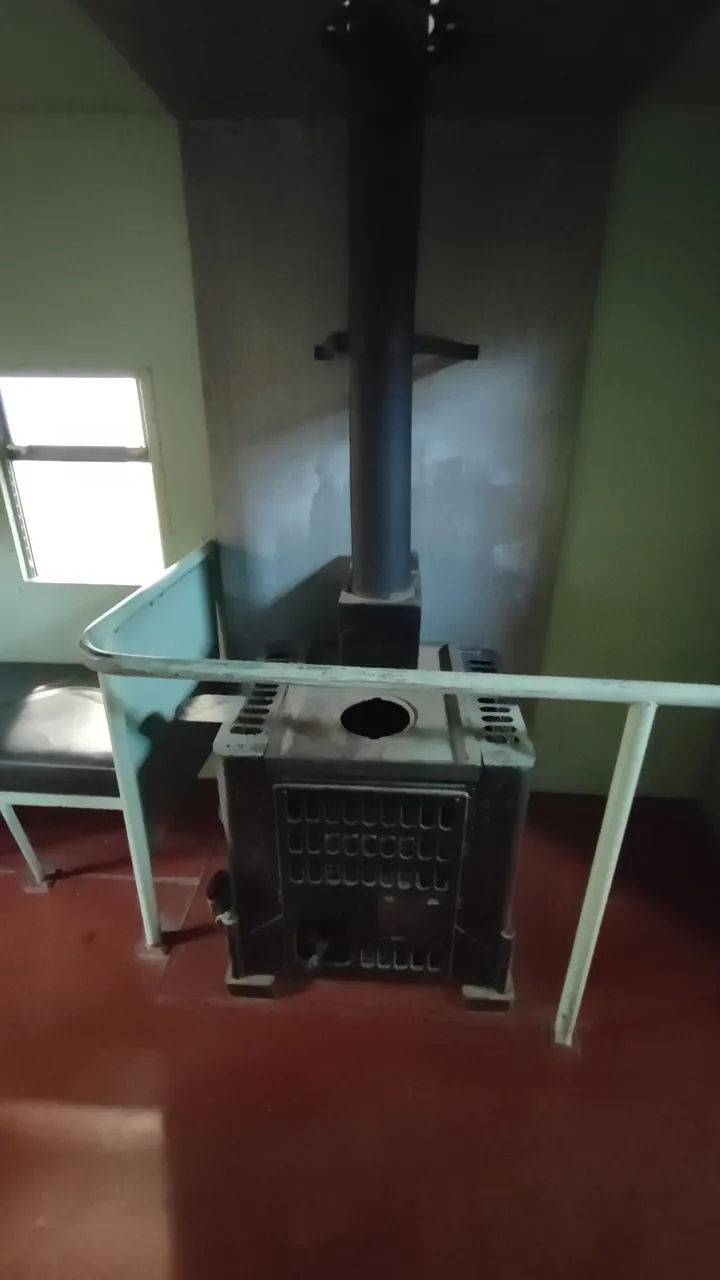
Next up is the end of the train the old caboose. This was the most unsafe place to be. Changing speed can create slack and the ripple effect is the worse the father you go back. It's said the slack can knock a full sized man to the ground if it's bad enough. A very much spacious area where work and observations need to be taken by the flagman,rear brakeman,and sometimes the conductor.
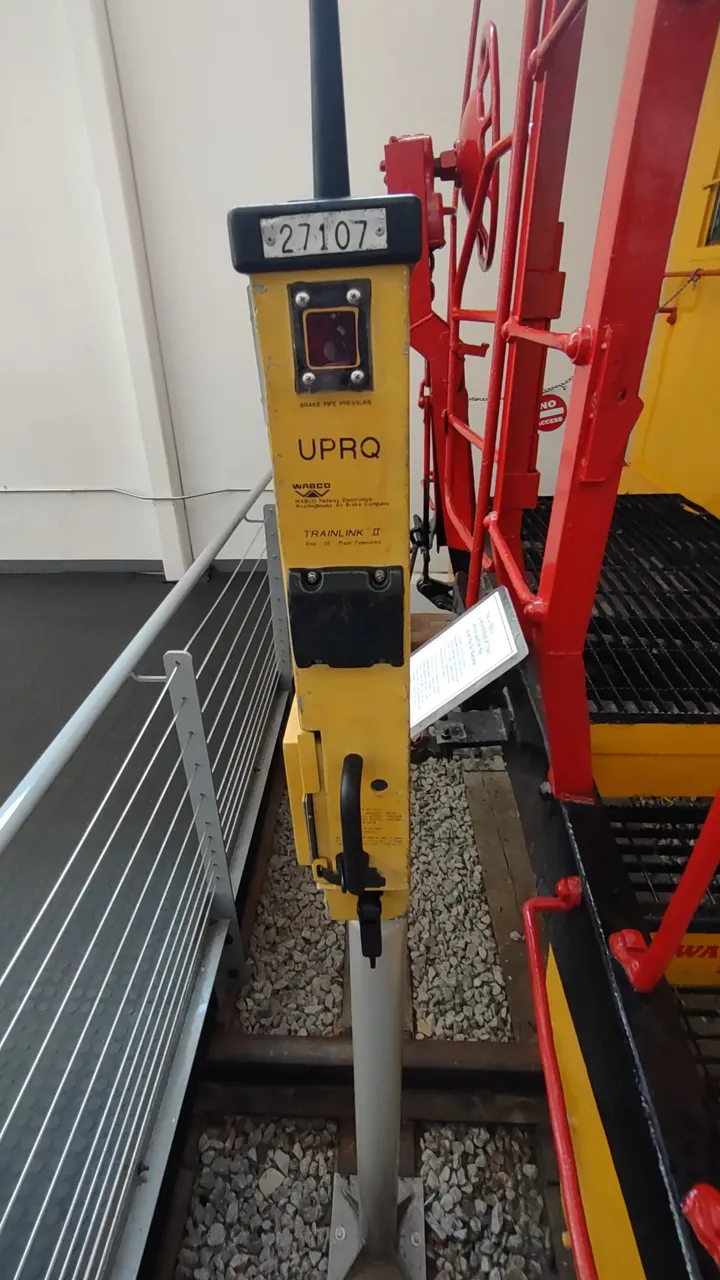
By 1970 technology got rid of cabooses by the introduction of the FRED (Flashing Rear End Device). This allowed other trains to see the flashing light, controlled brake pressure, and sent other data to the front of the train. A good function is it can detect accidental separation of cars because it tracks them by GPS.
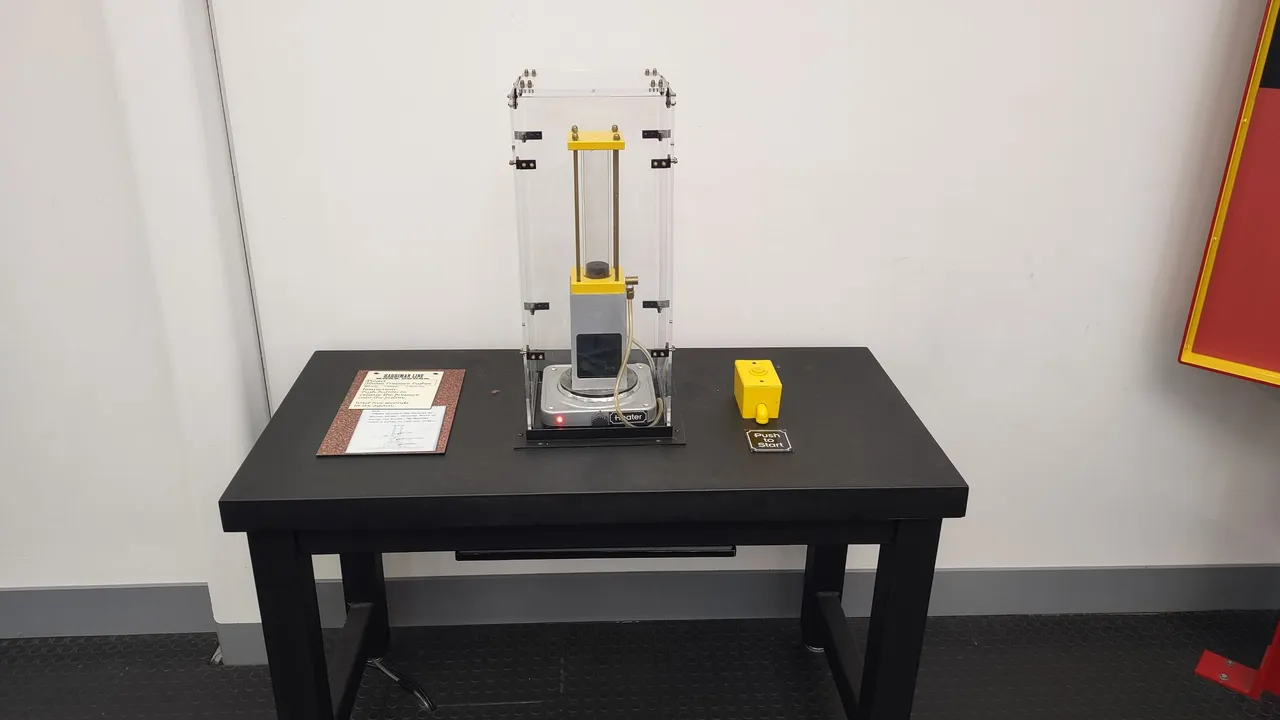
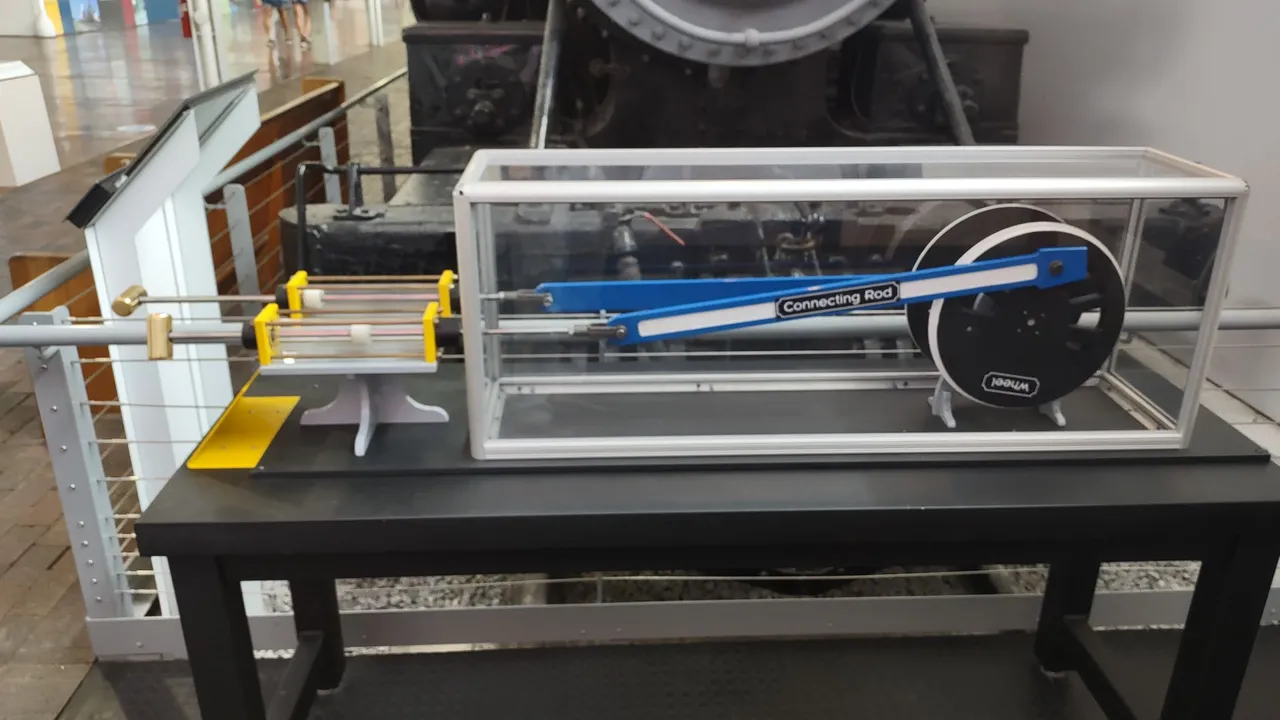

What you see above are all the elements needed get the train moving. It all starts with creating pressure to power pistons. To move a piston you need water pressure (steam) water is heated up via a heater to create pressure. The first photo illustrates this and you can push the button near the display to actually see the piston move up.
The second photo is some manual levers to utilize to move the connecting arms to move the wheels. Looks easy but actually takes some time to figure out the correct movements and takes some muscle.
The third photo are the different kind of rail wheels that are used. I had to try rolling them, I guess it's the kid that remains in me, haha. I could not figure the last two maybe they need to be connected with another set than be offset.The other two fit into the grooves of the rail perfectly.
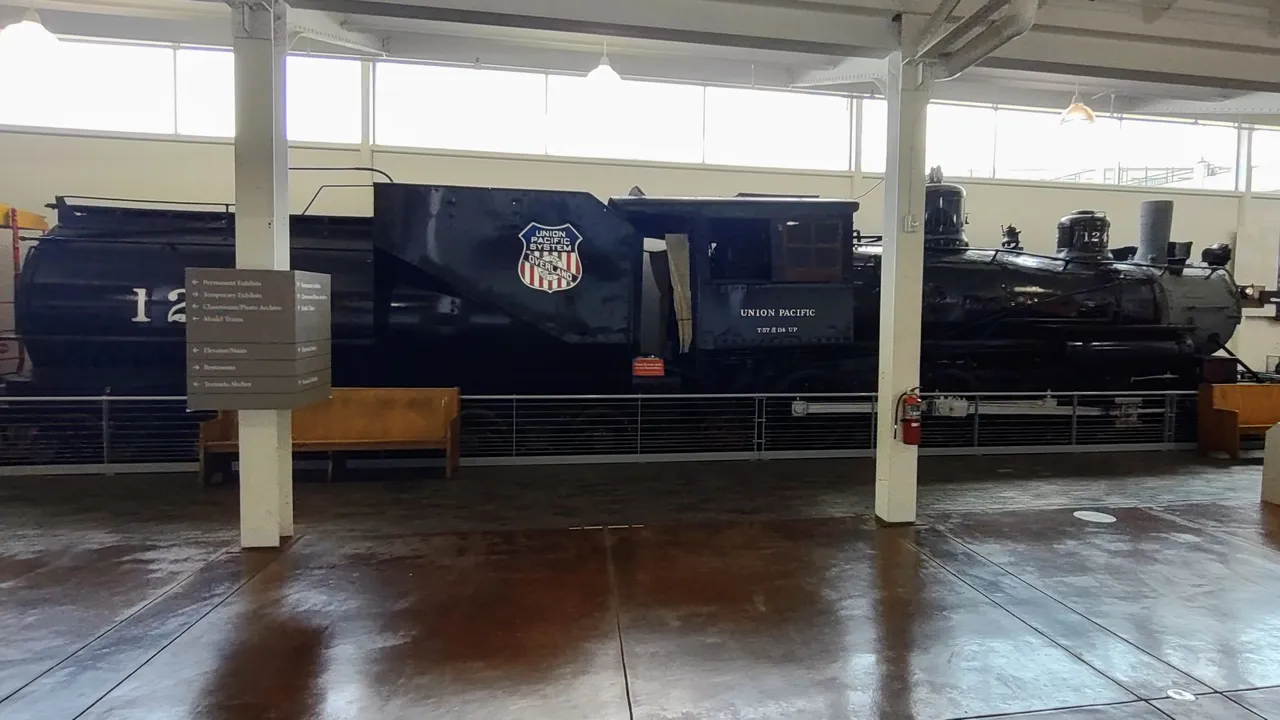

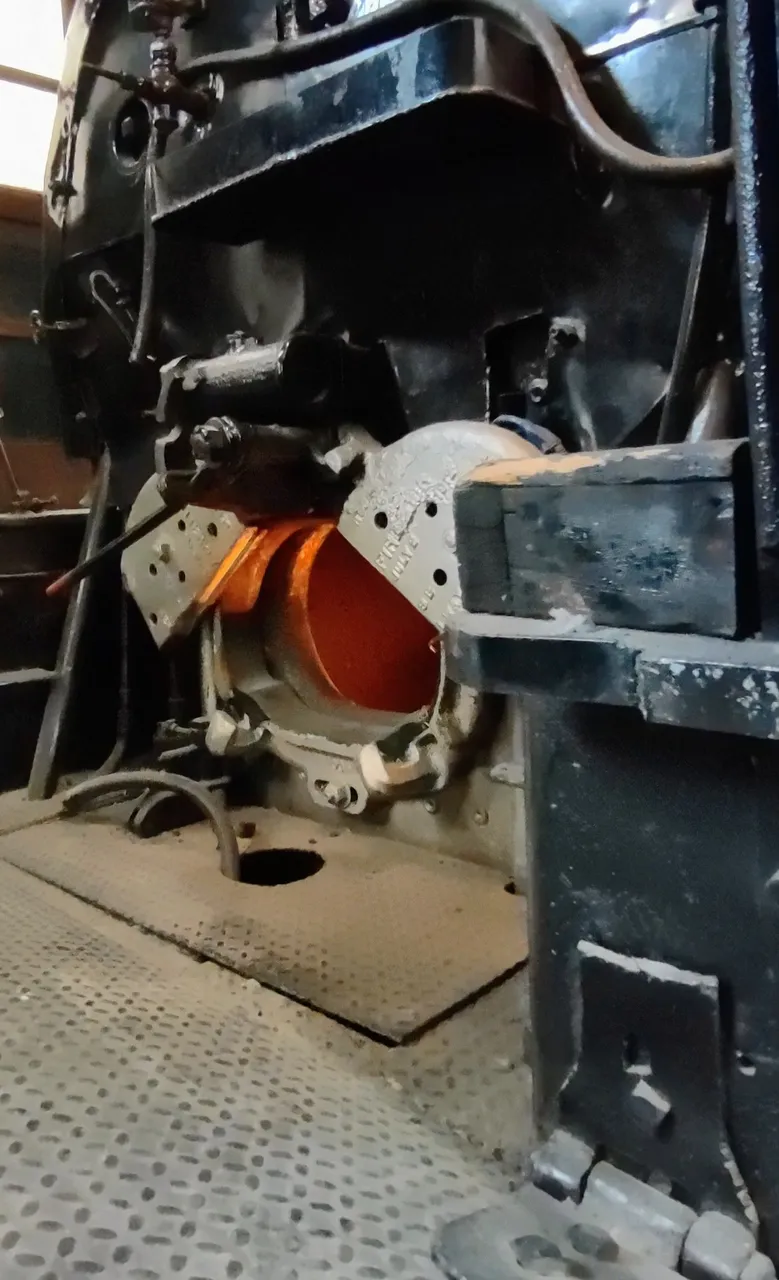
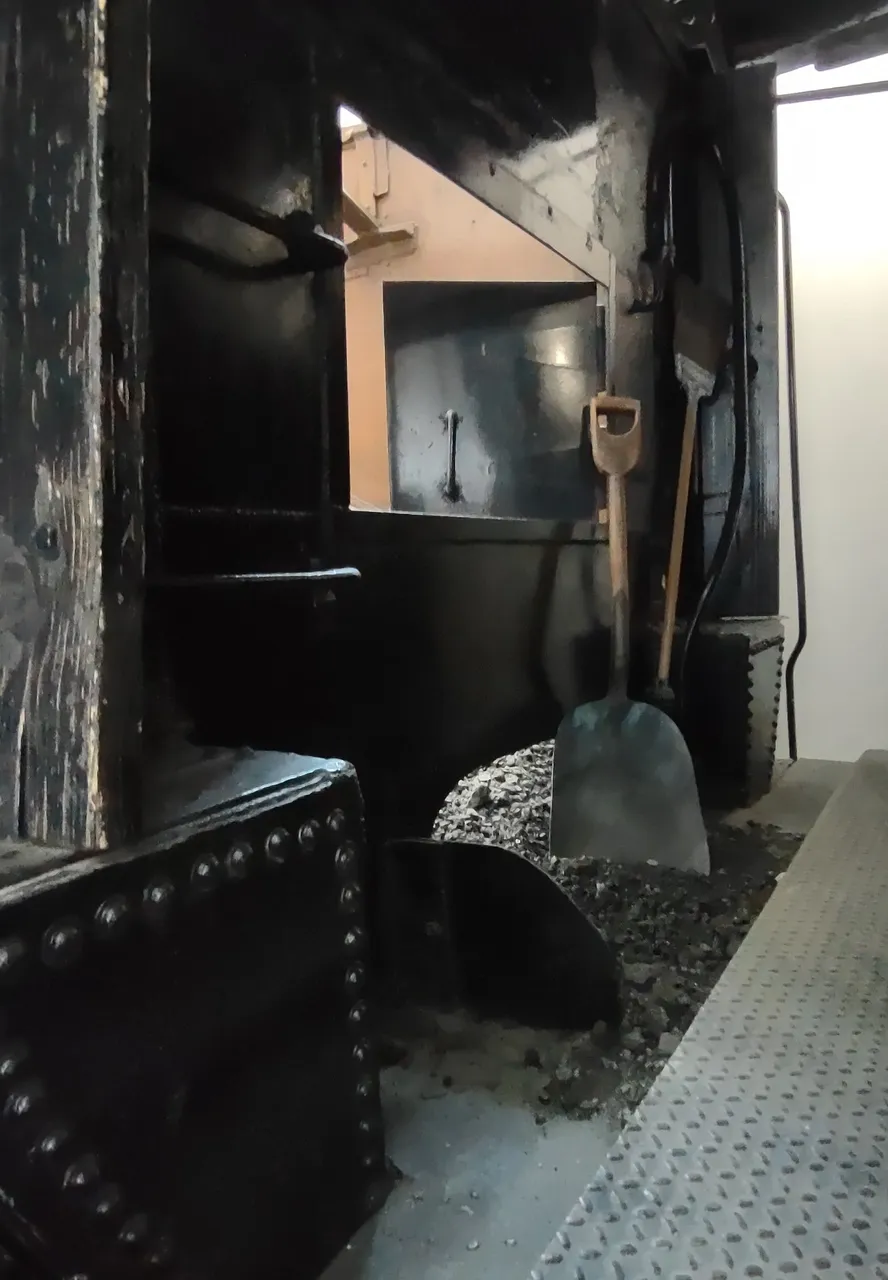
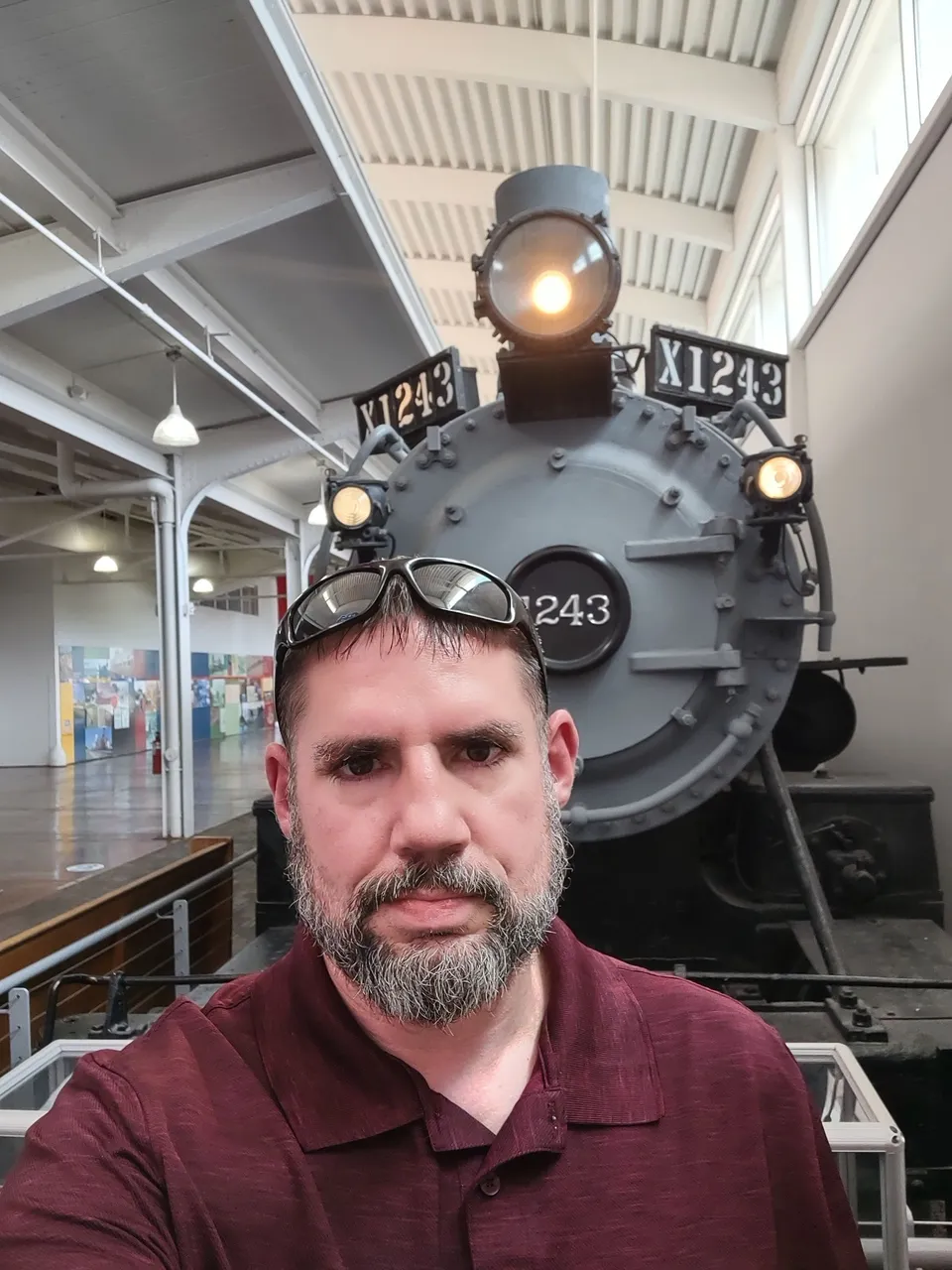
Well I saved what I think is best for last. An awesome piece of pure iron. What you see is a Union Pacific 1243 steam powered train. It was built in 1890 and had a long working life to 1955. Interesting fact is that it used 2 1/2 tons of coal to fuel it every day.
See the glowing hole that is the fire box, the fireman would use the shovel and throw coal into it. This would heat the heaters so steam could be generated by making the water boil. The train conductor would let the fireman know when to throw coal into the fire box.I just don't know what it is I have a crush on these old black steam powered locomotives.
That is all I have for you all. Take care, be safe and enjoy the rest of the weekend.